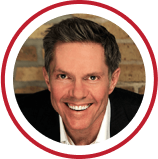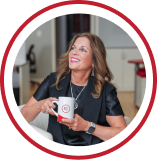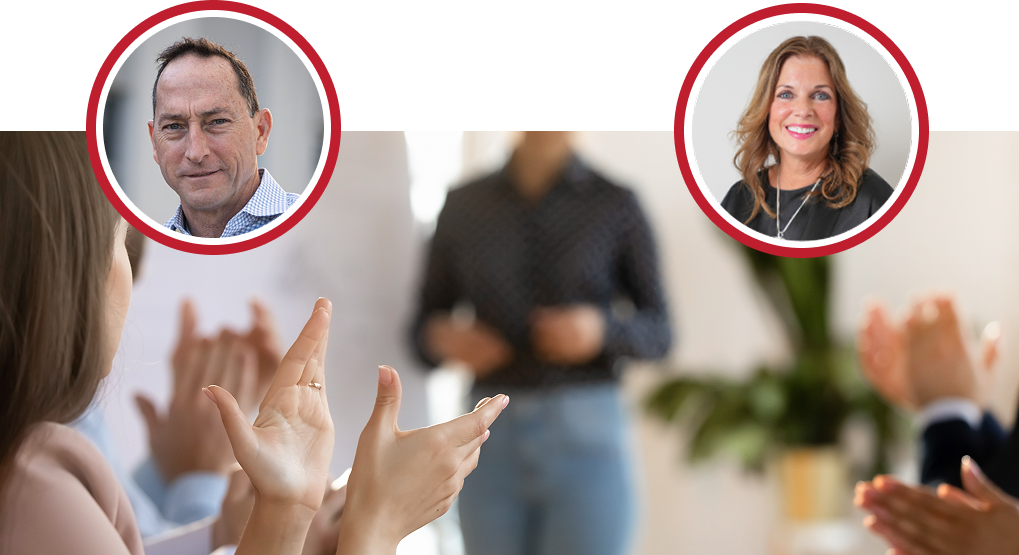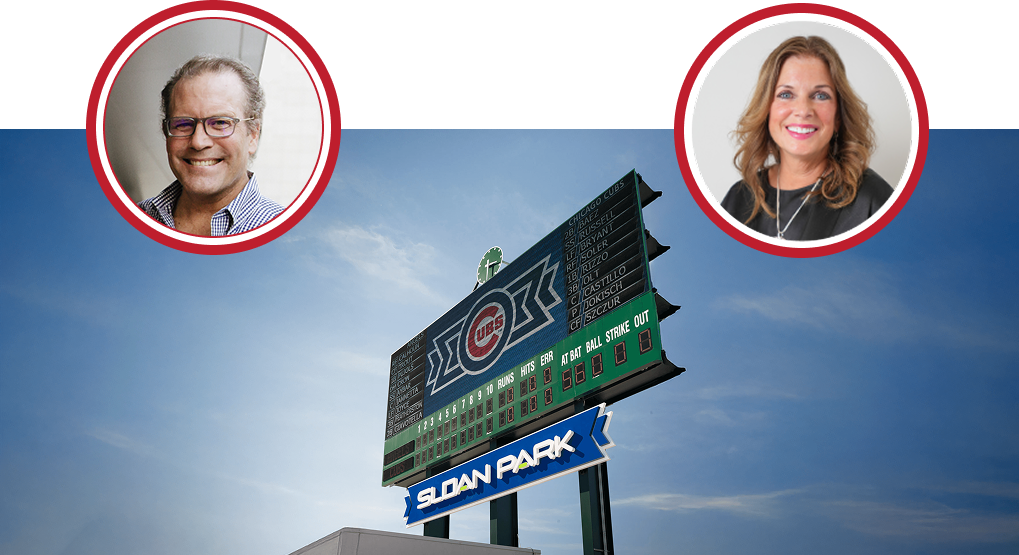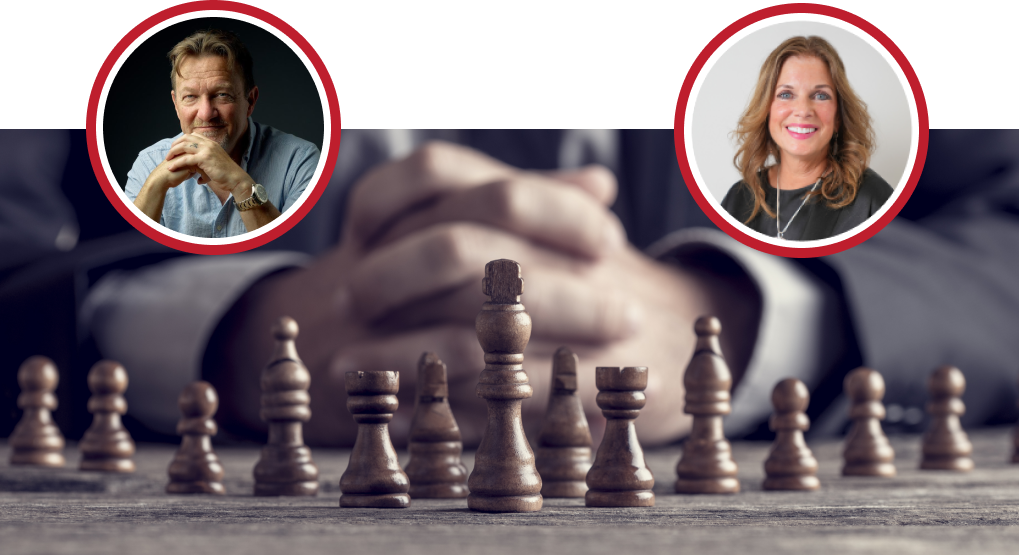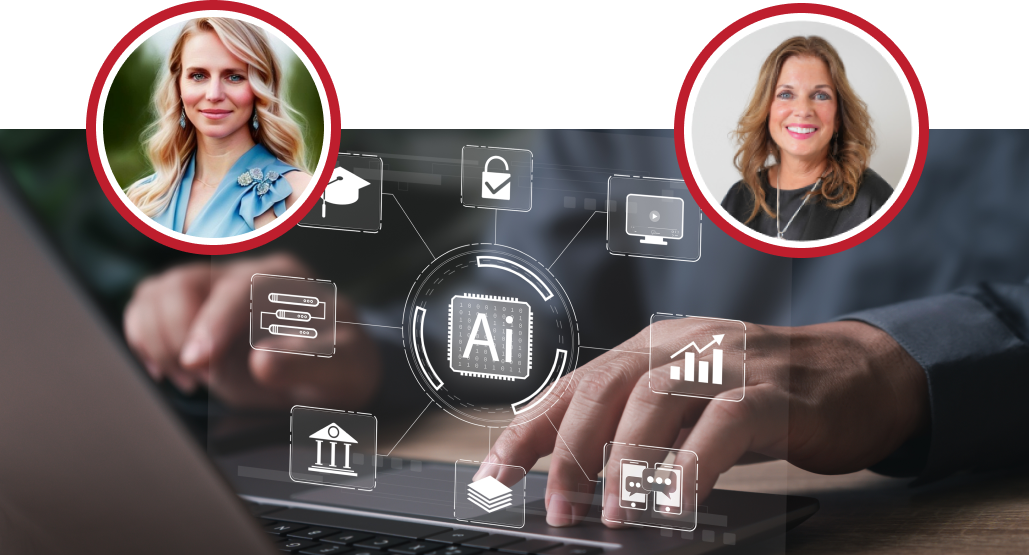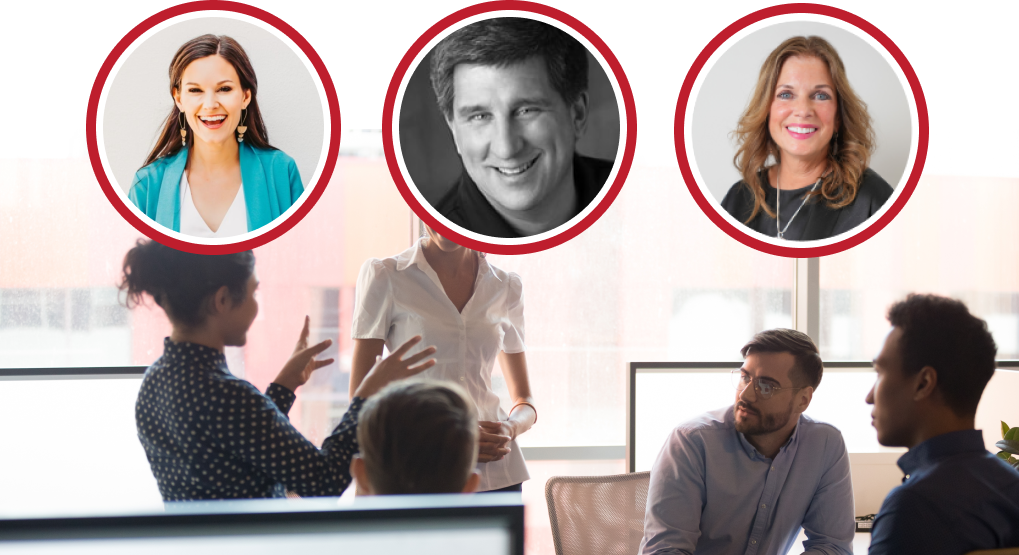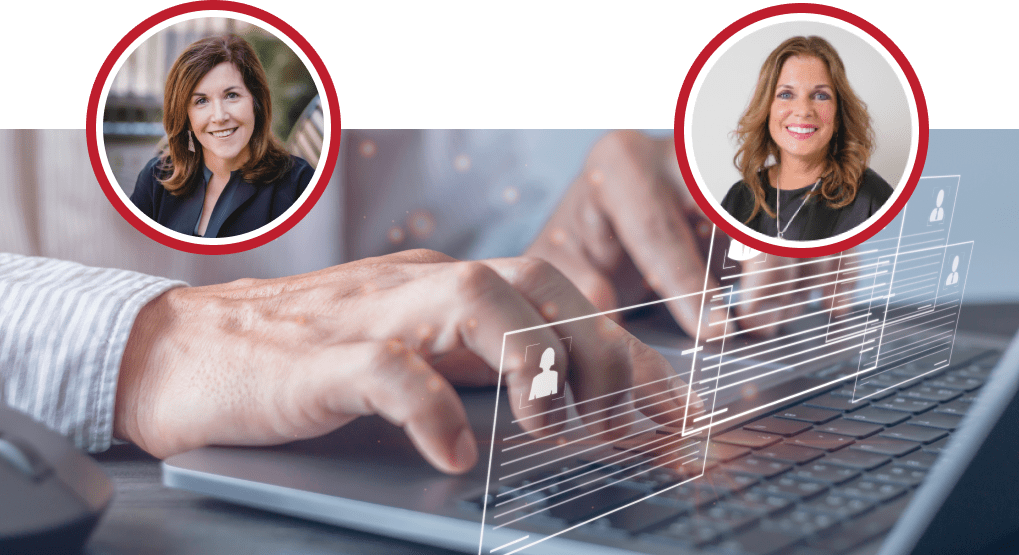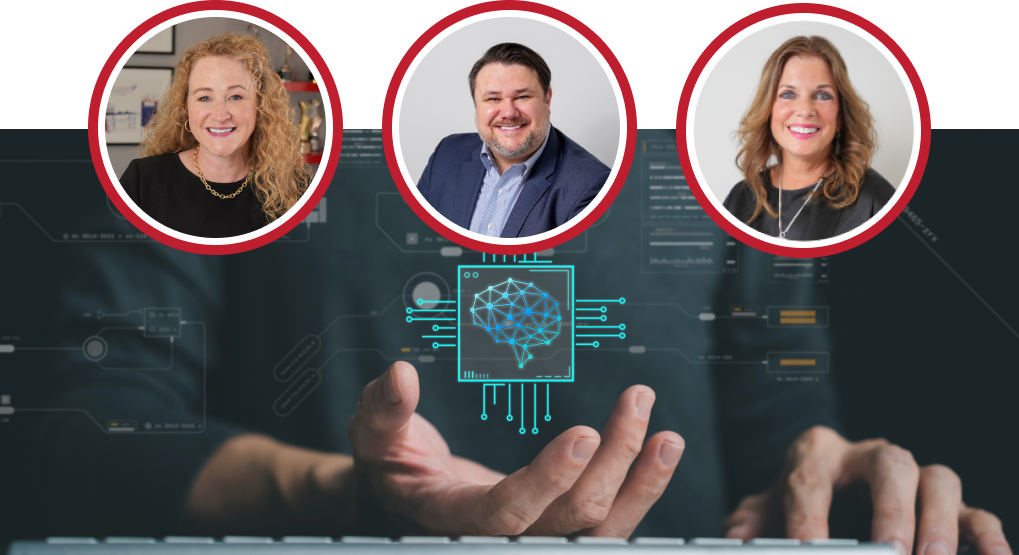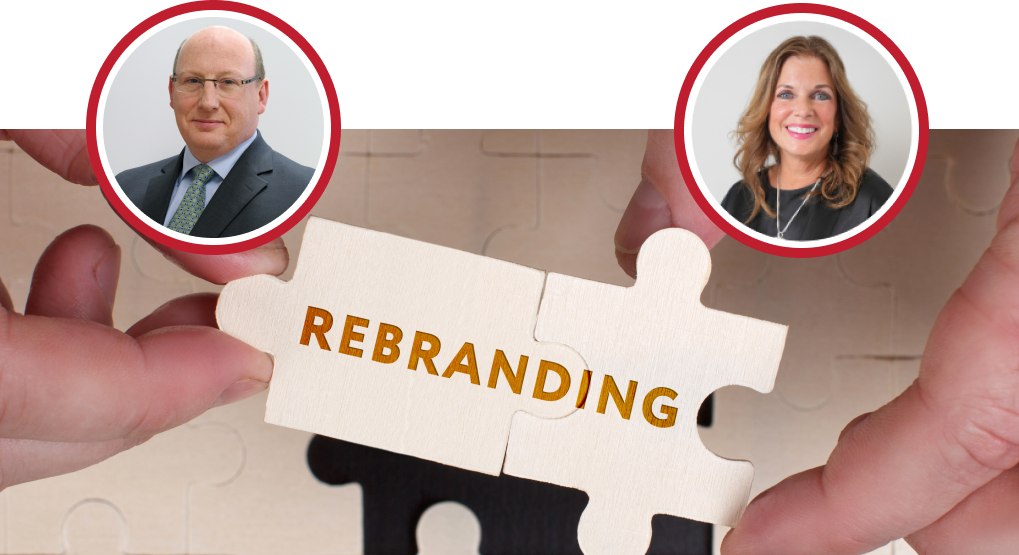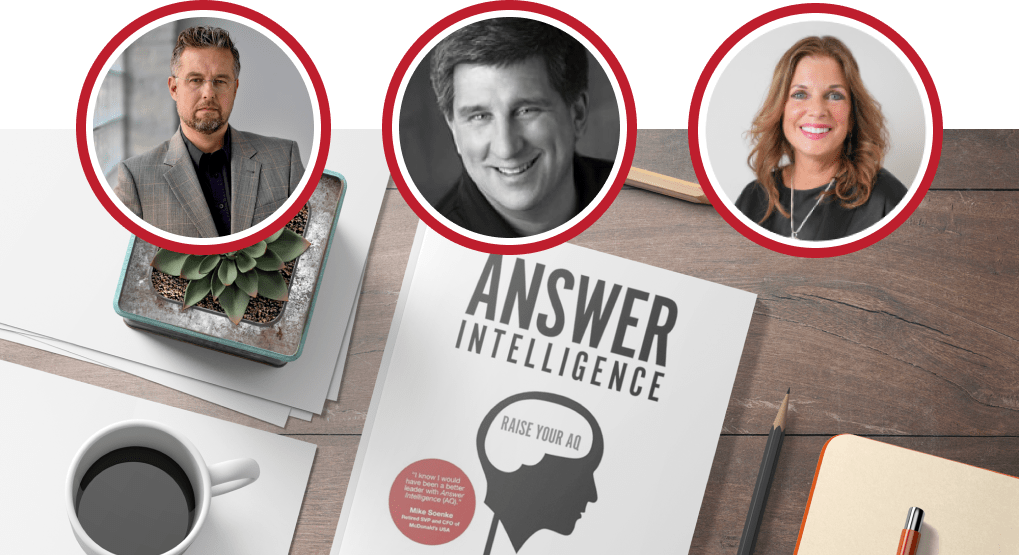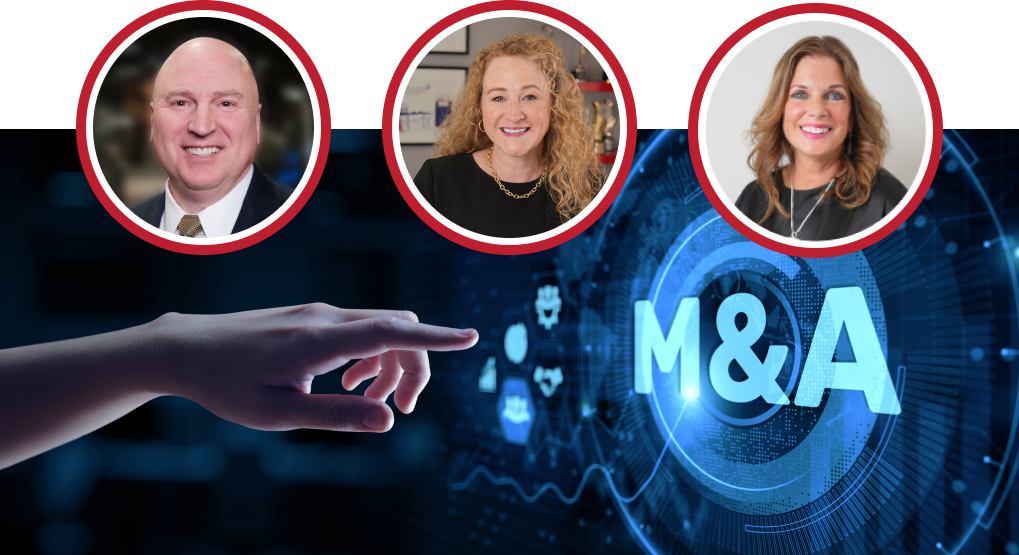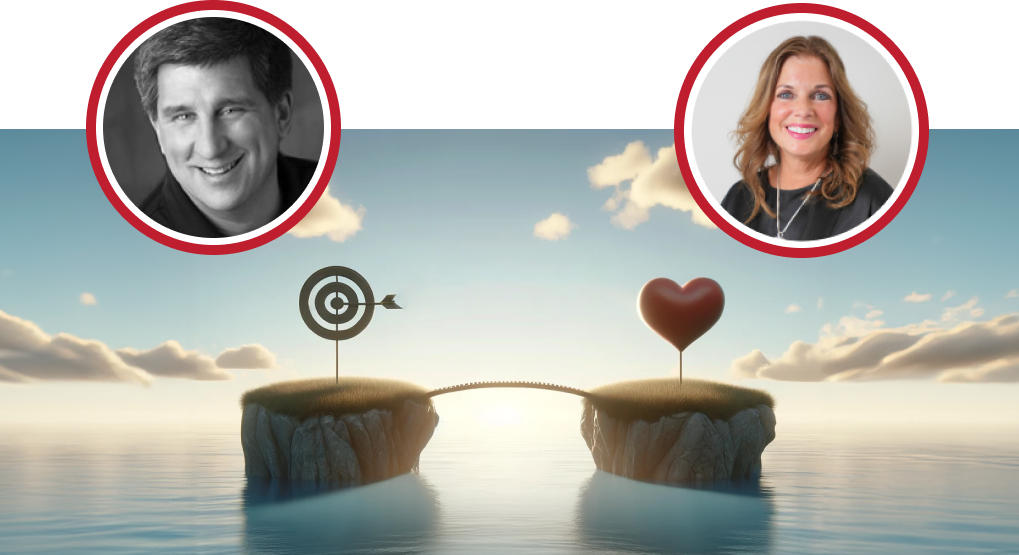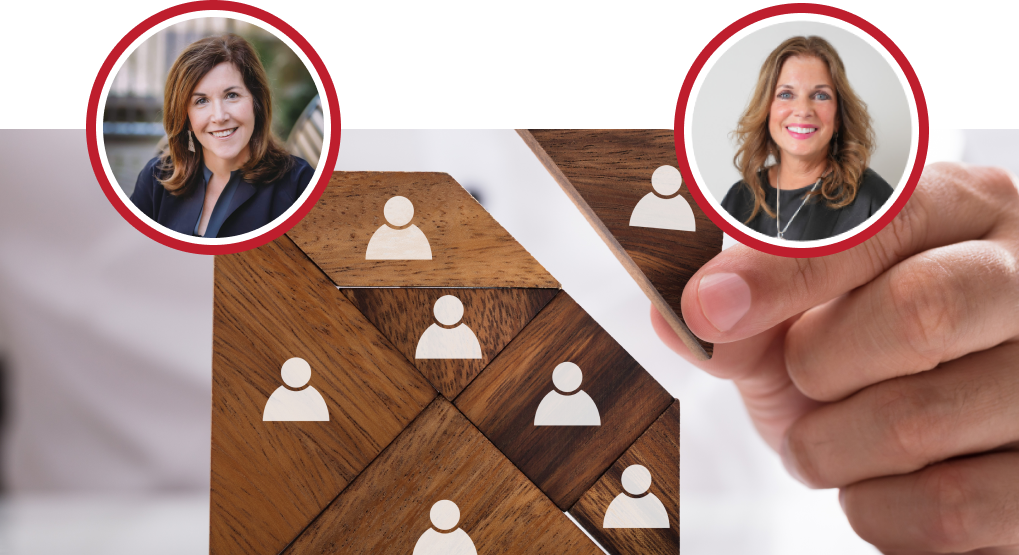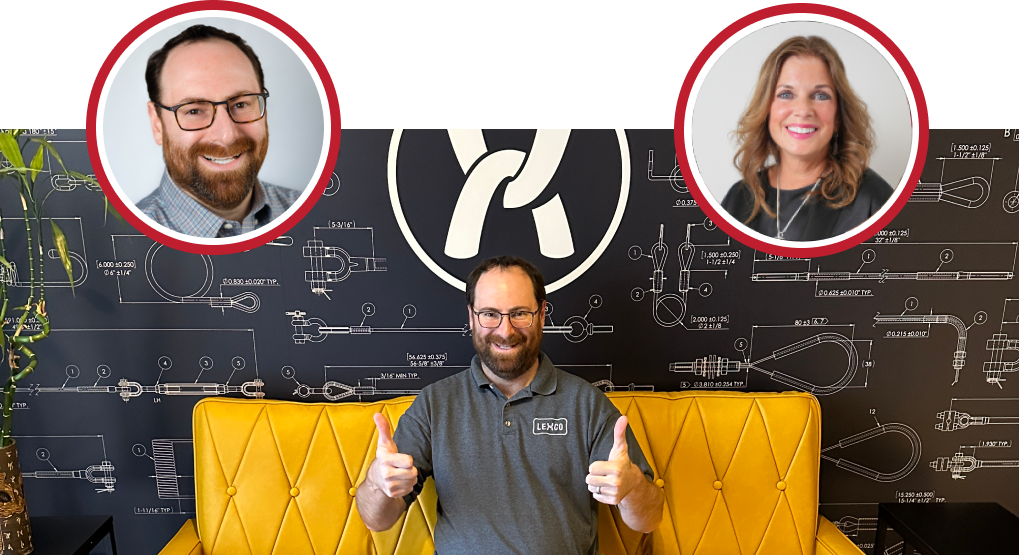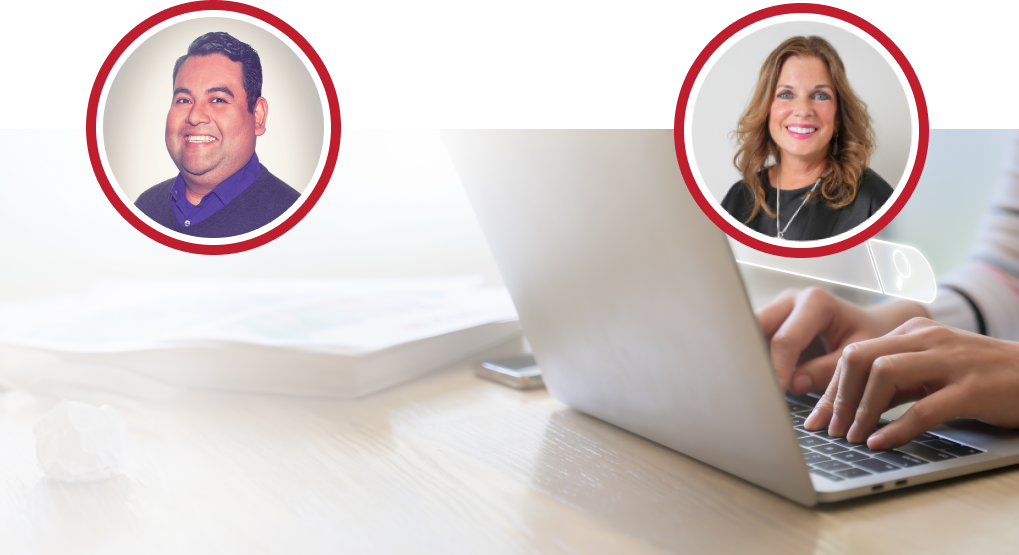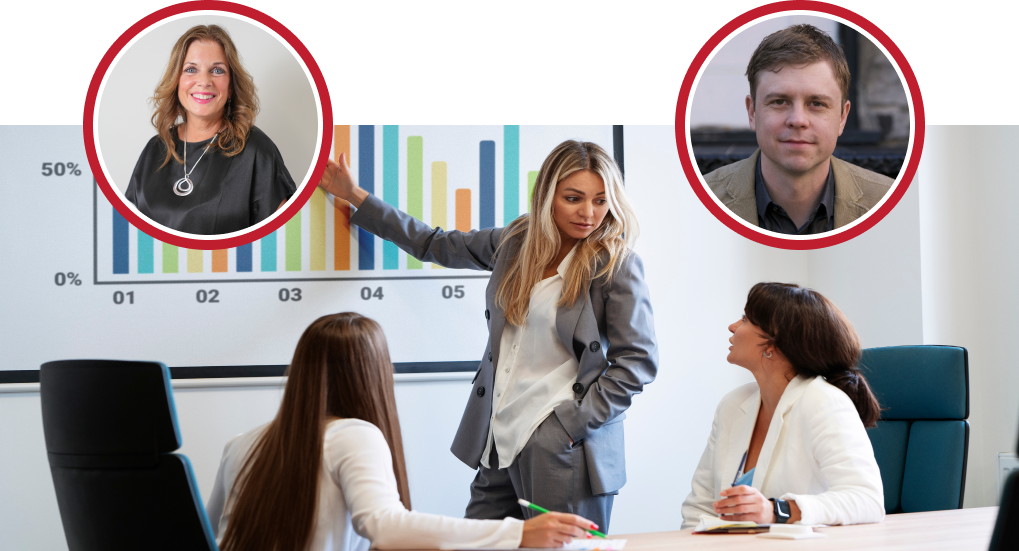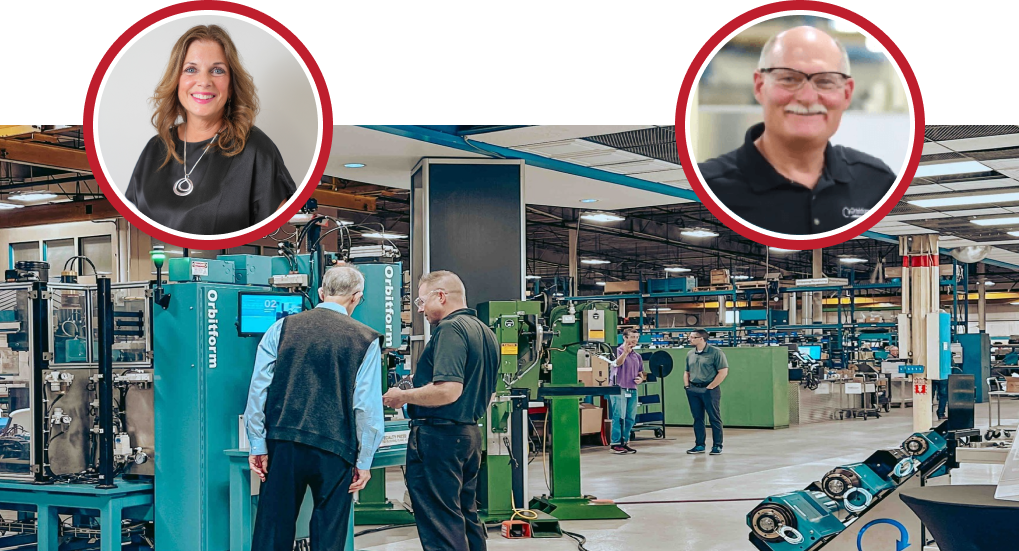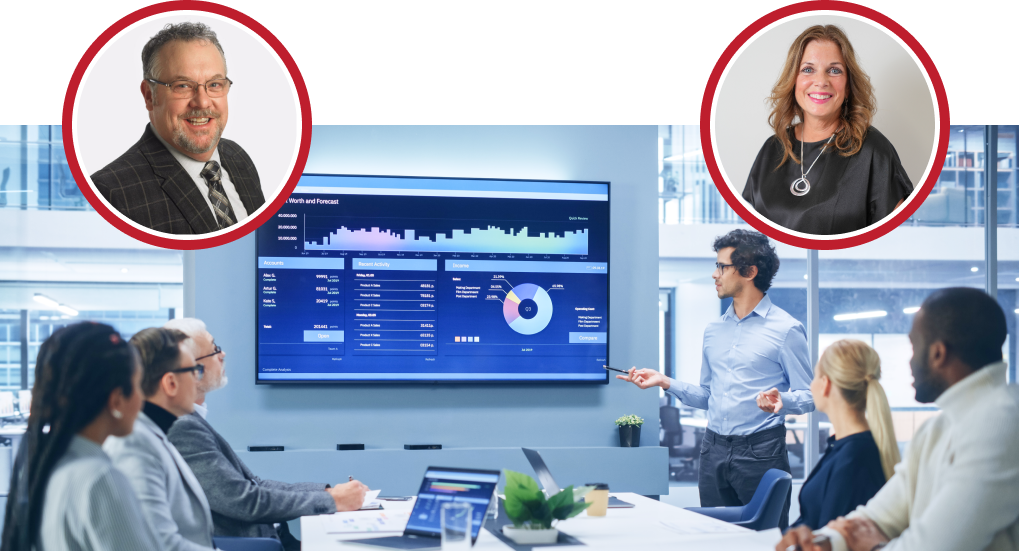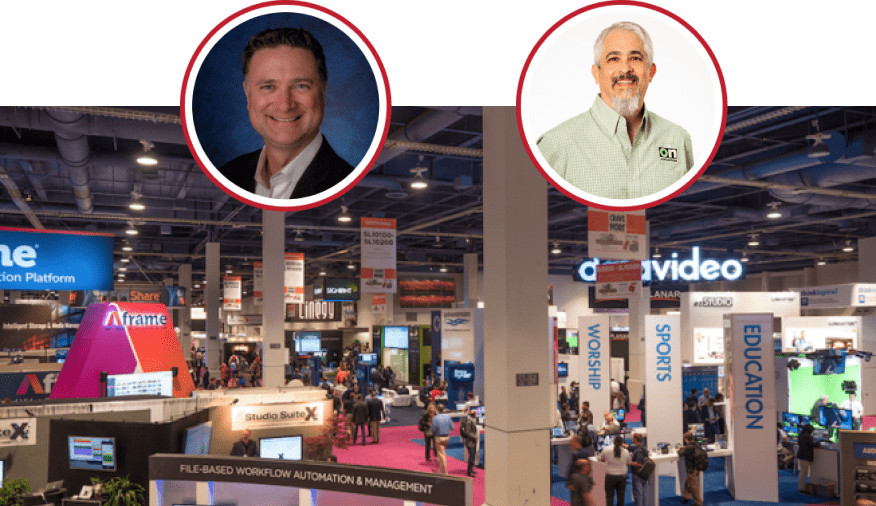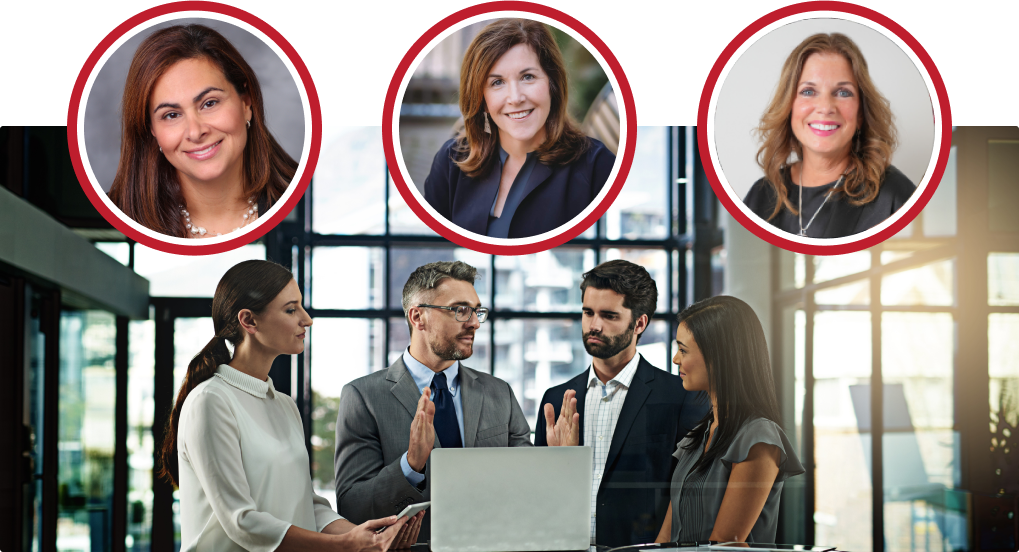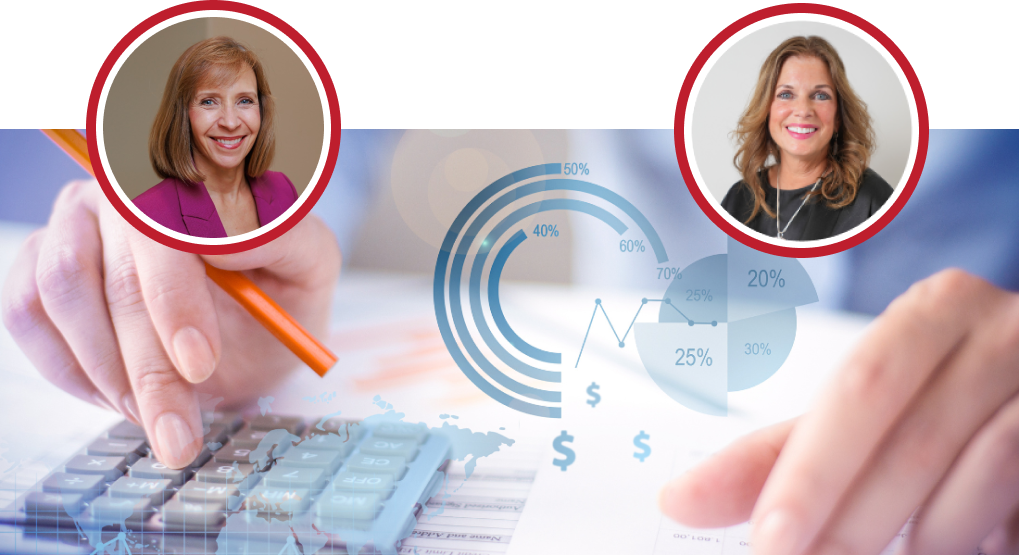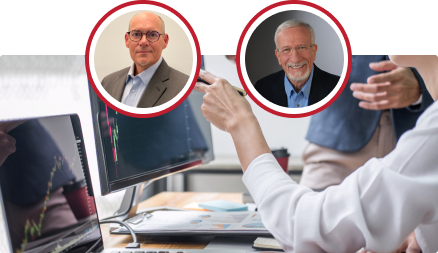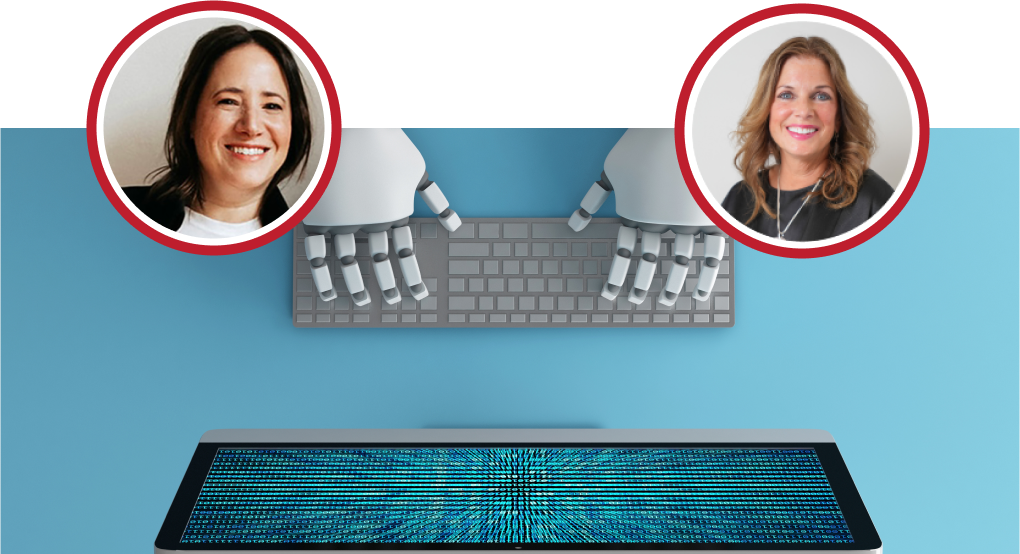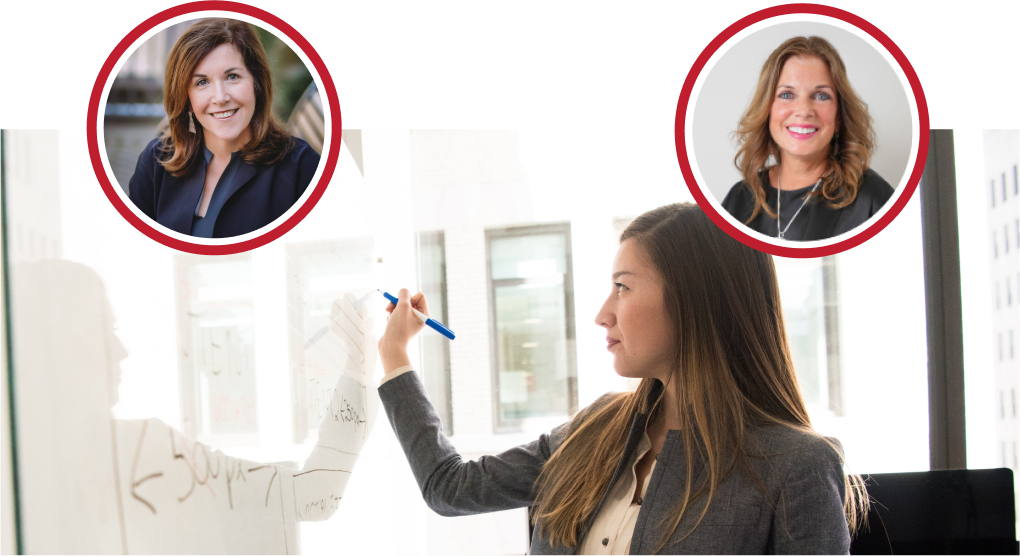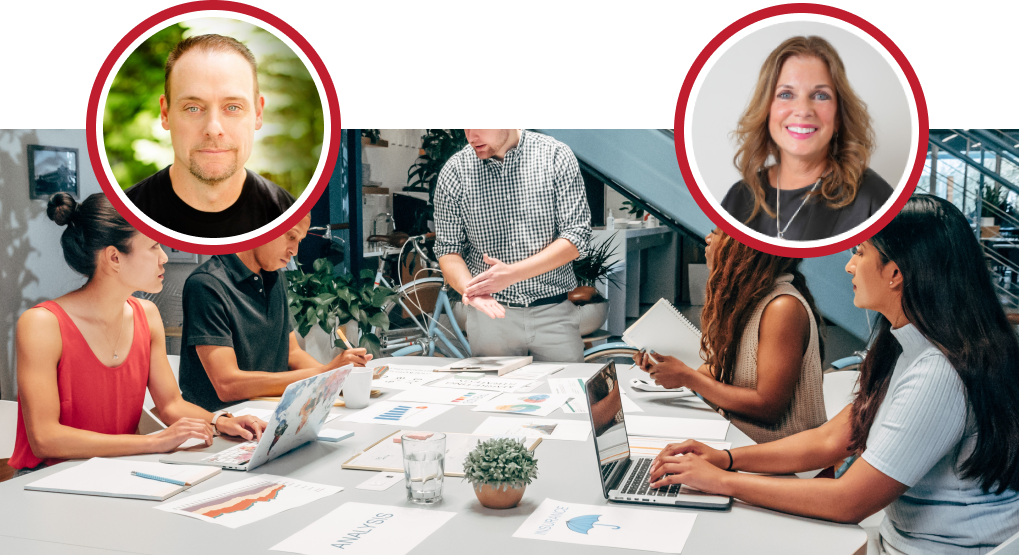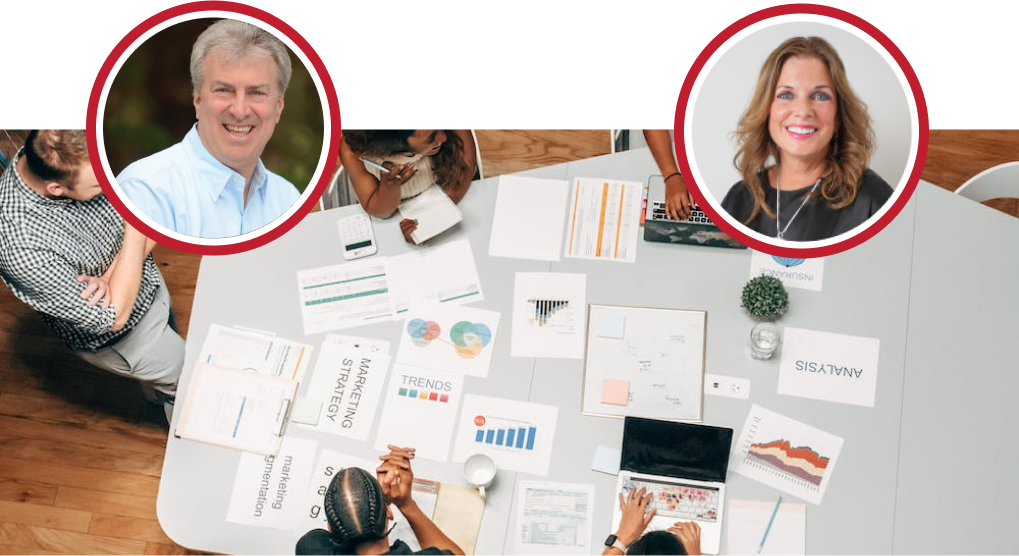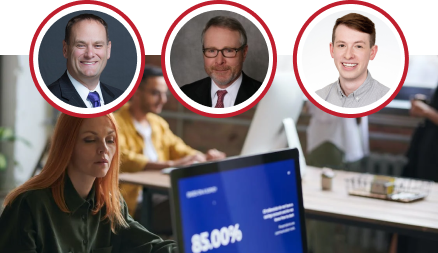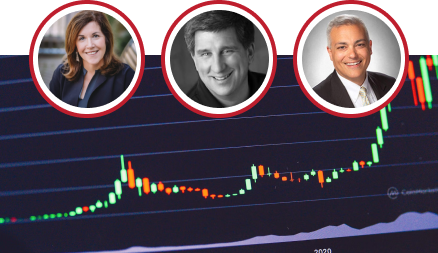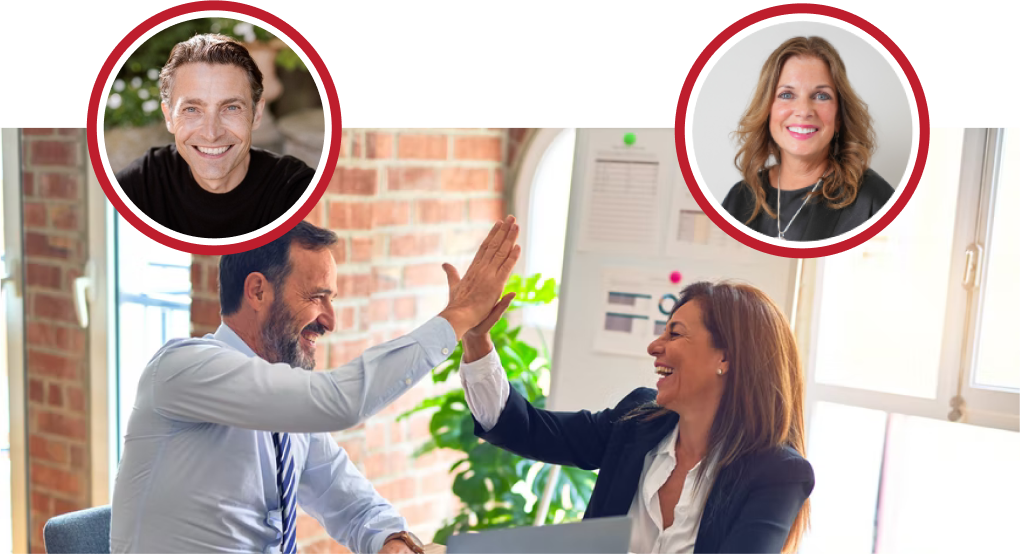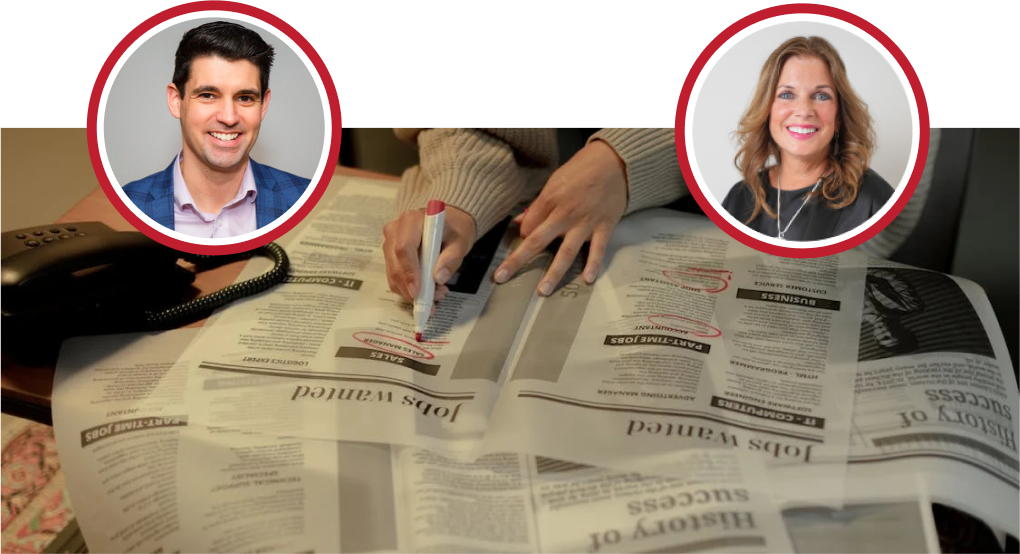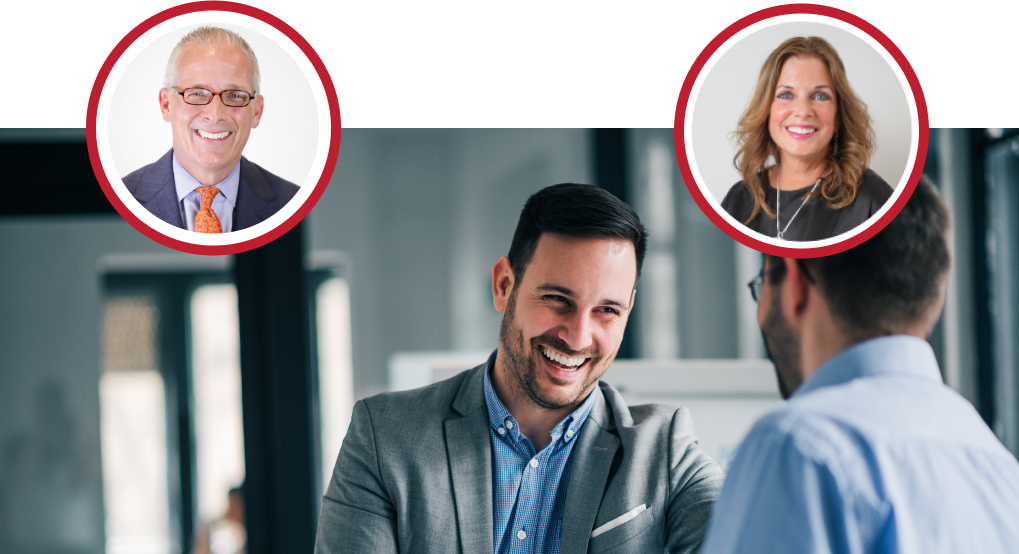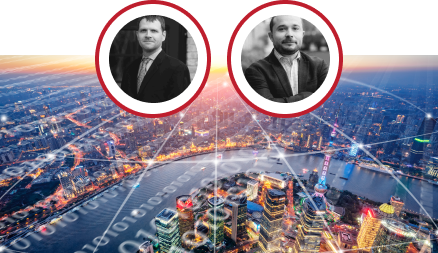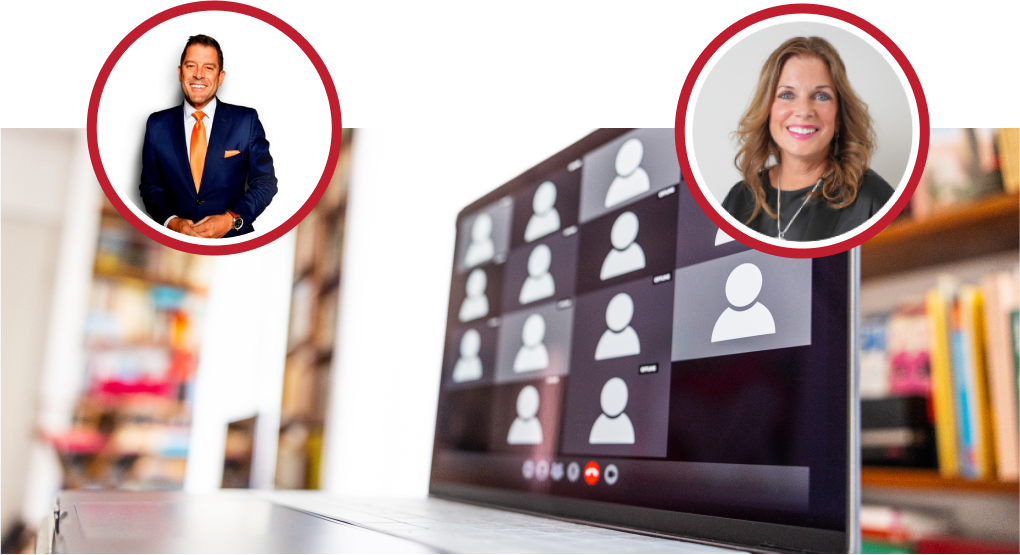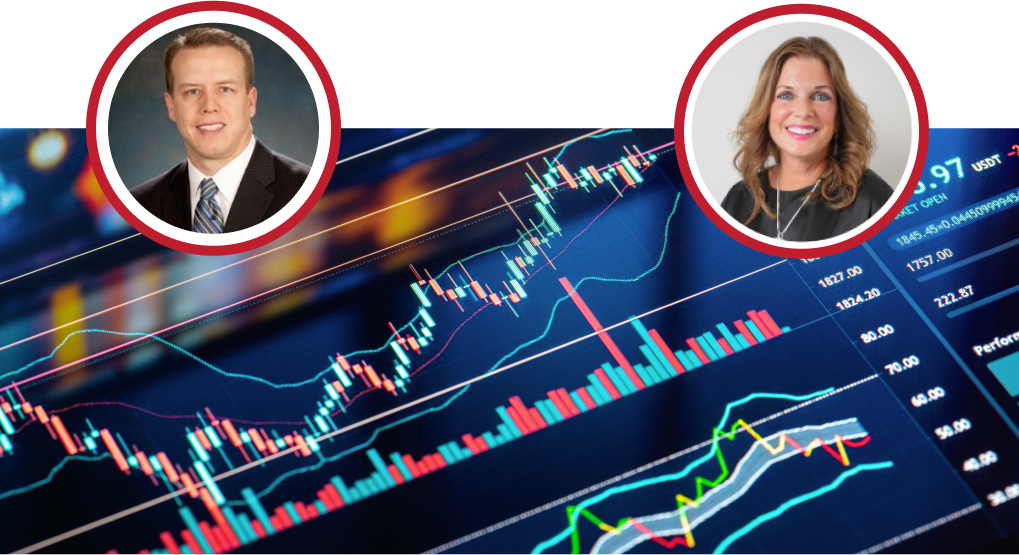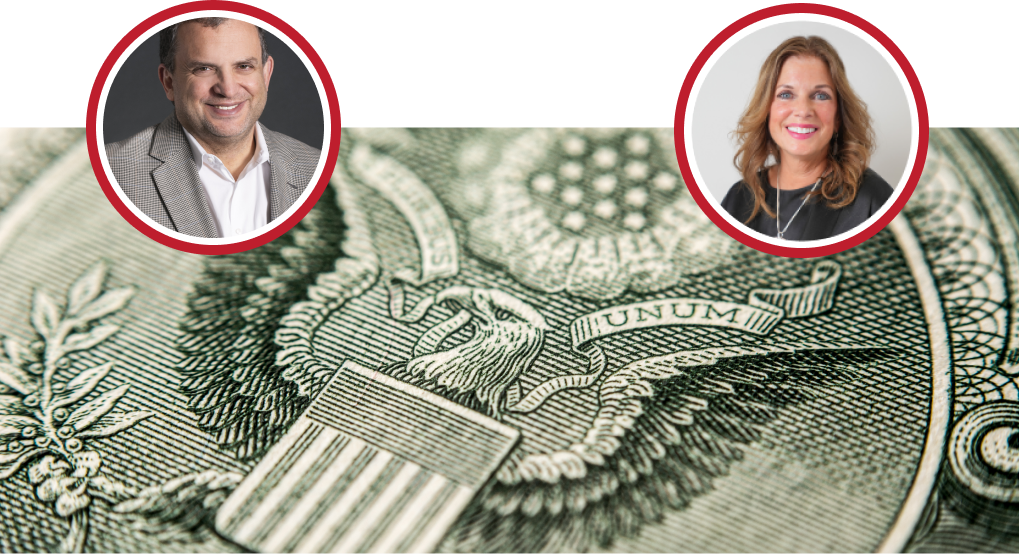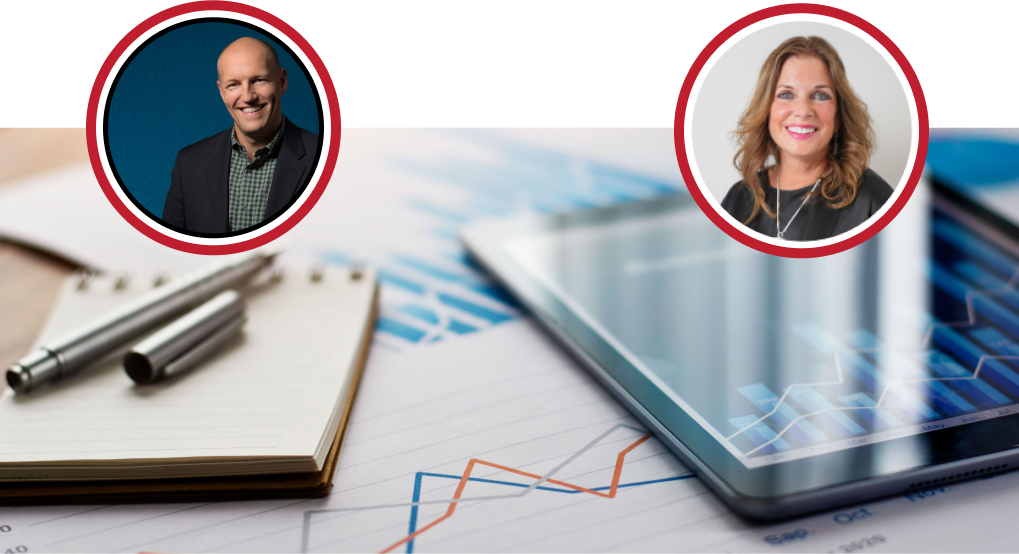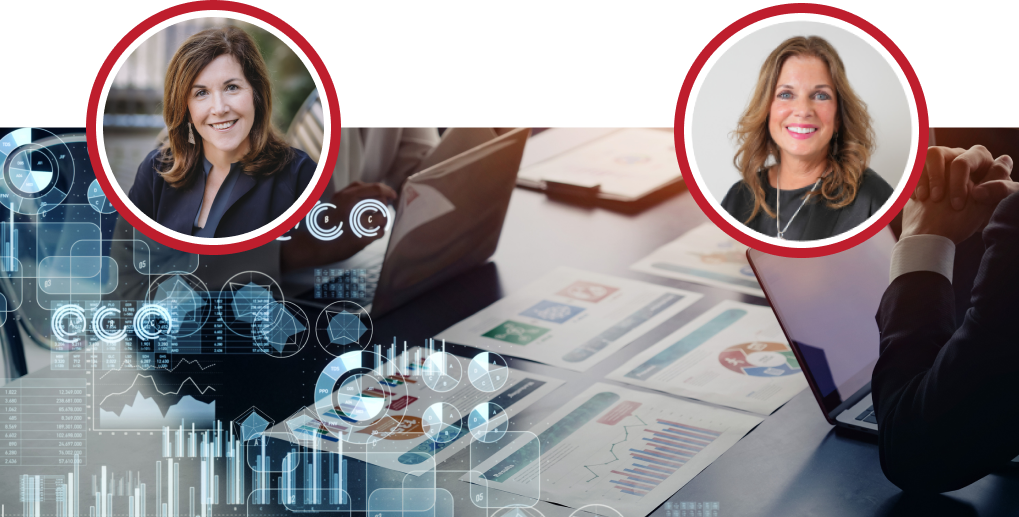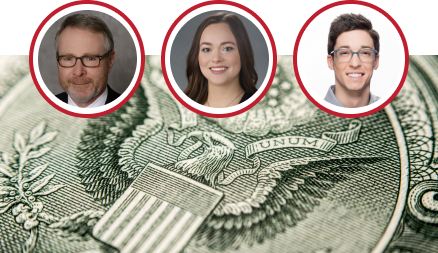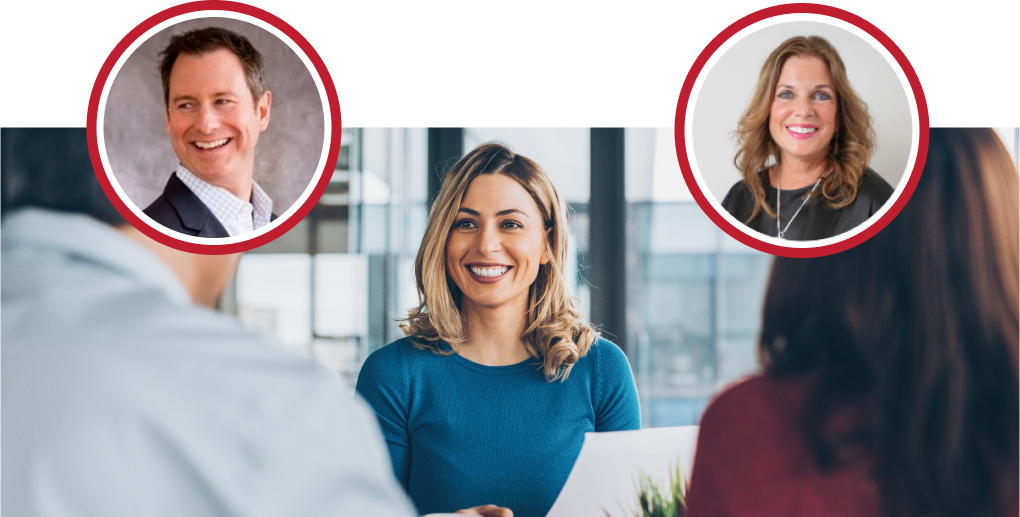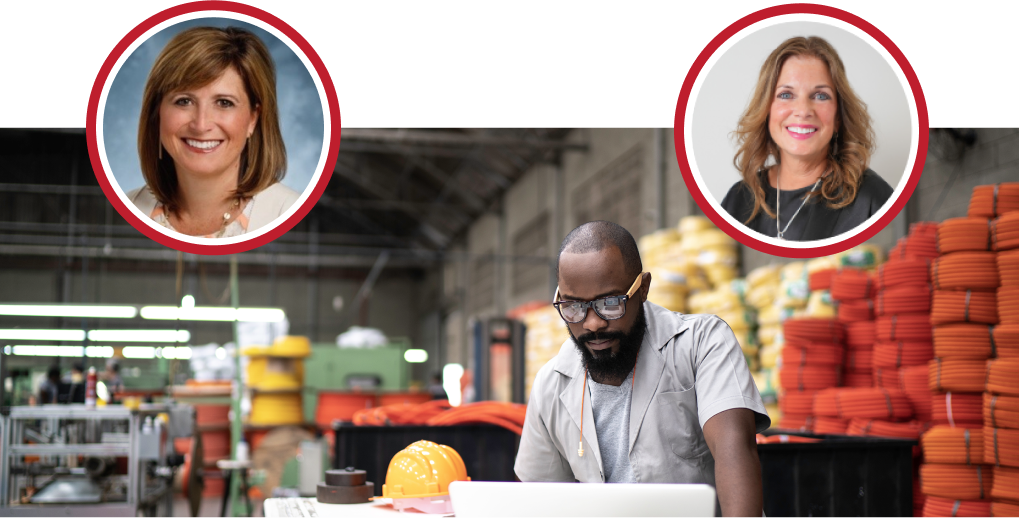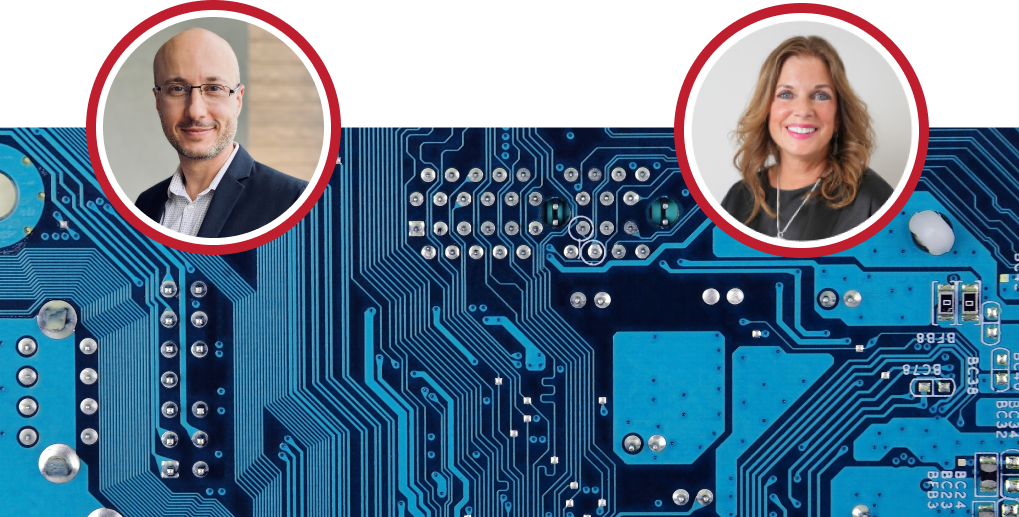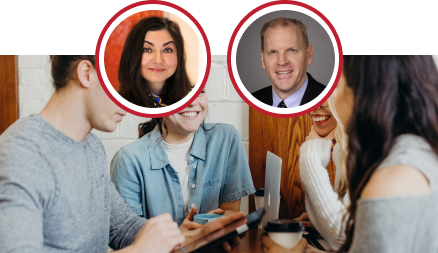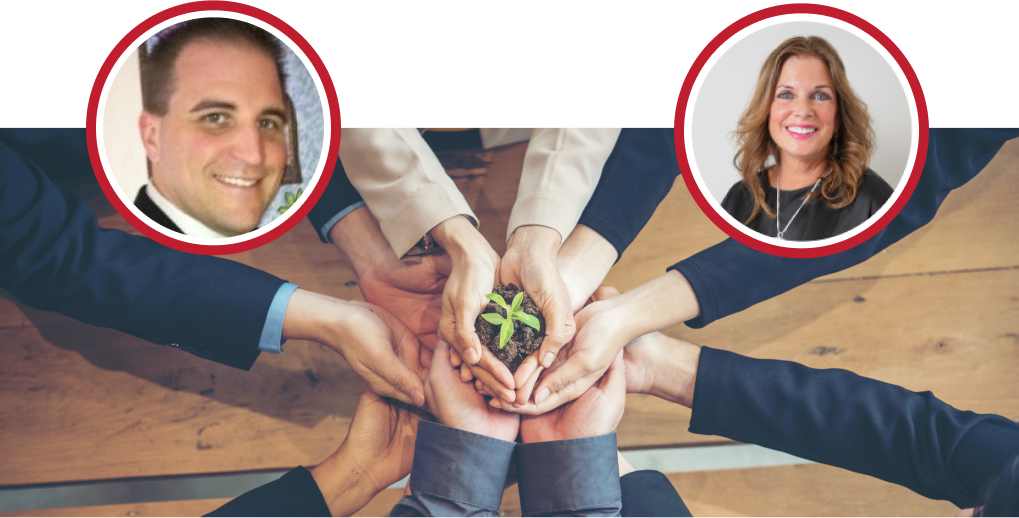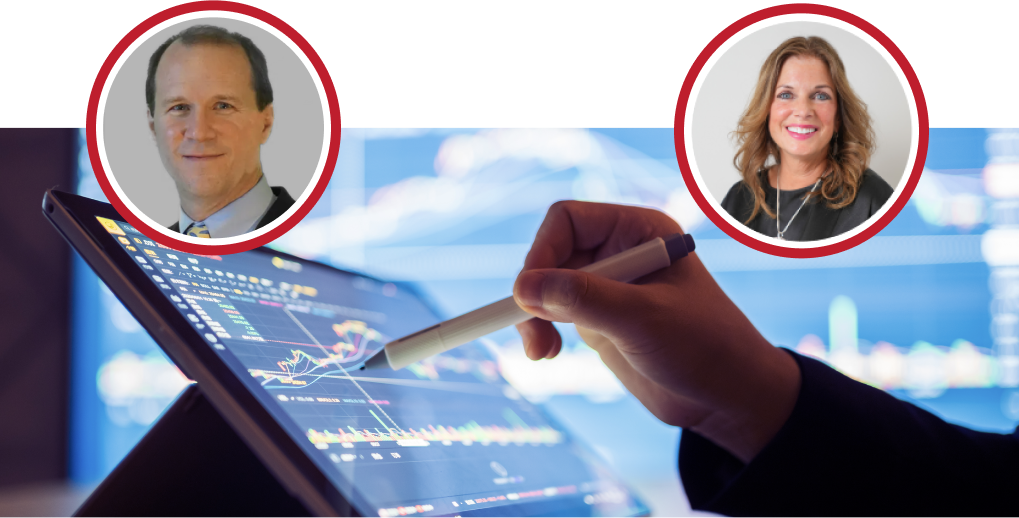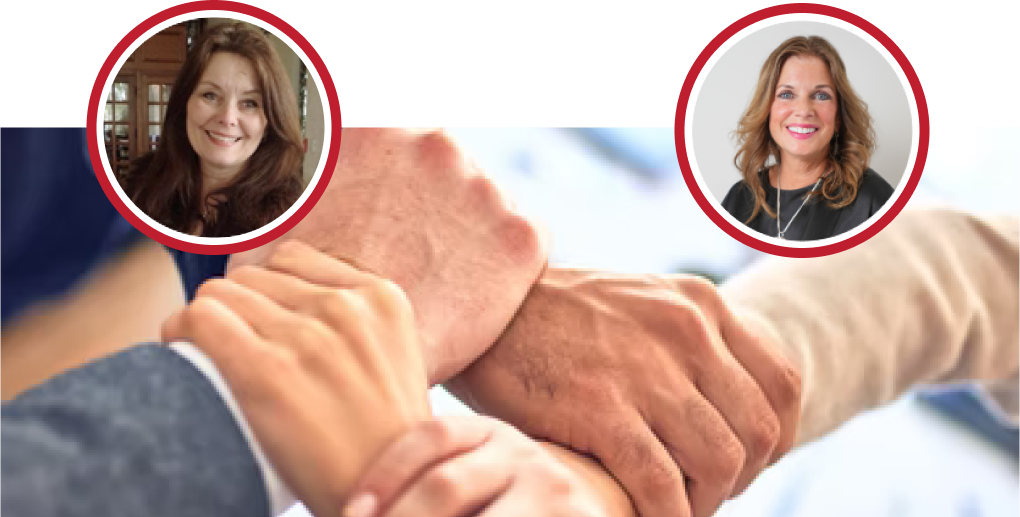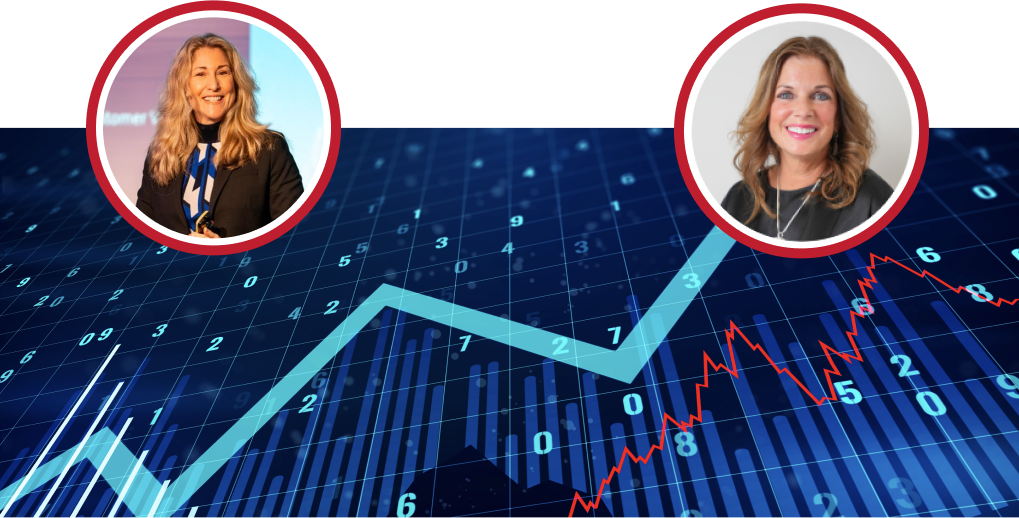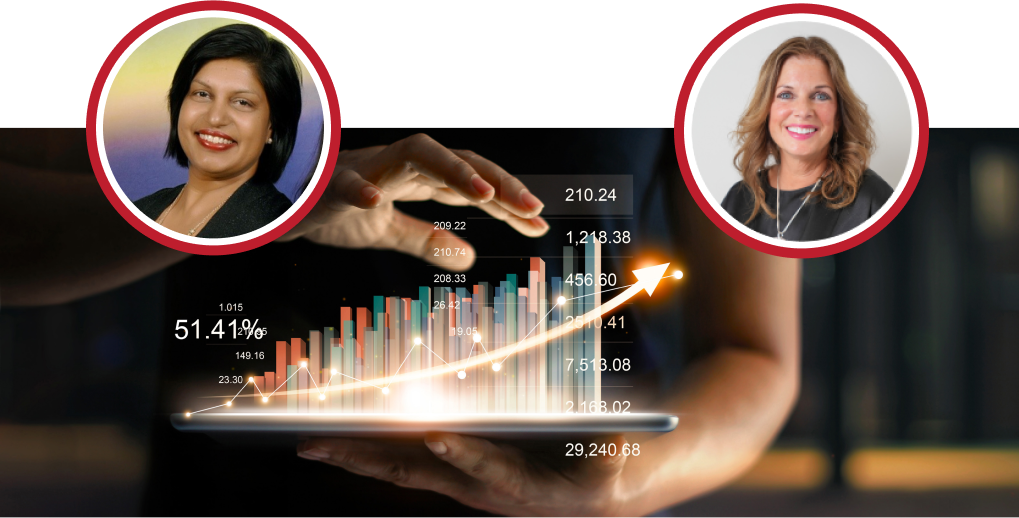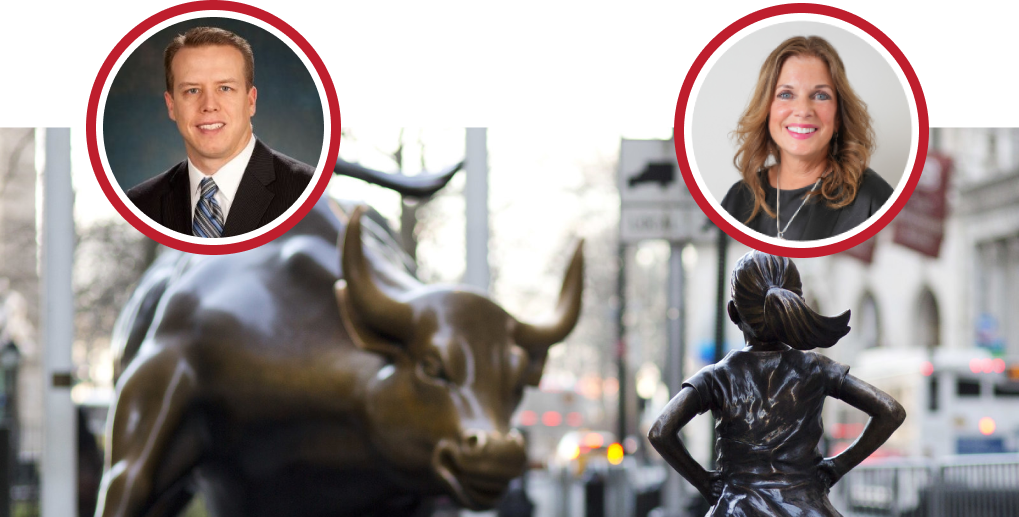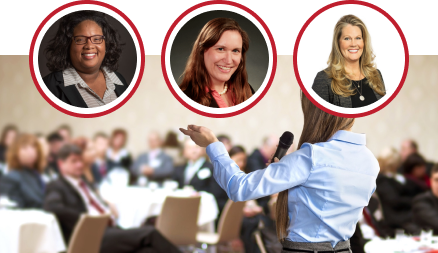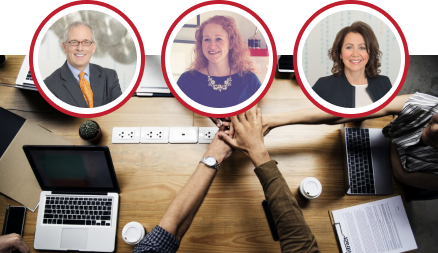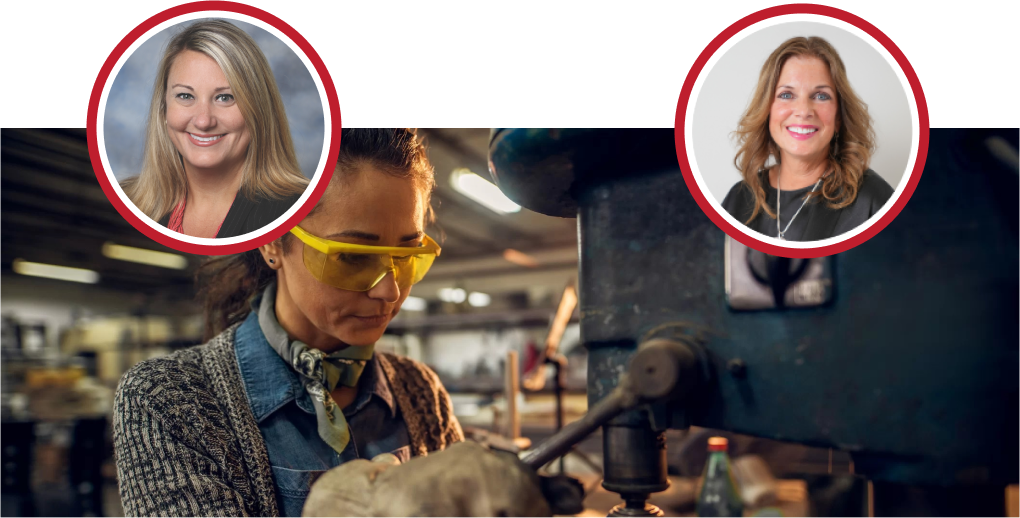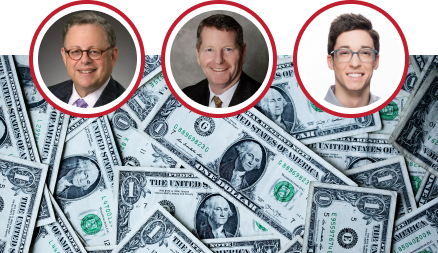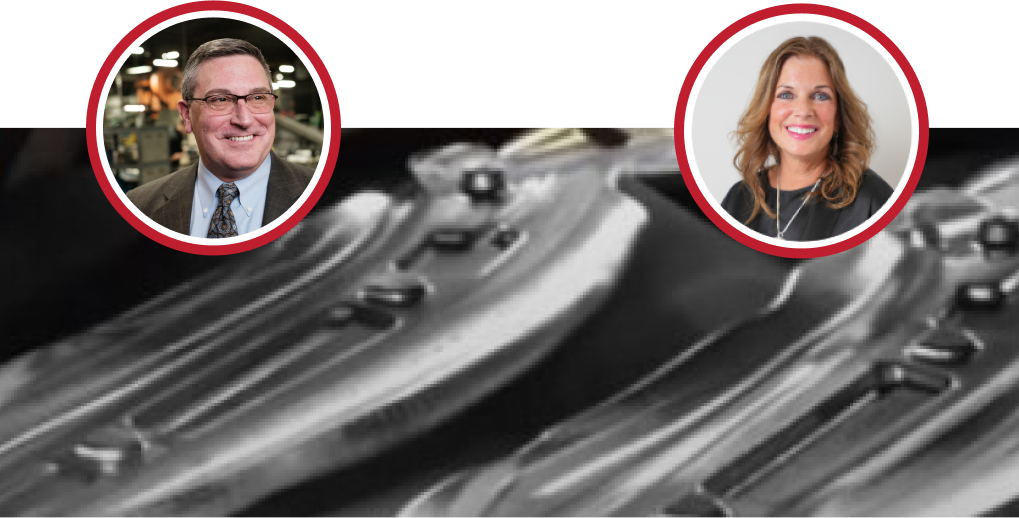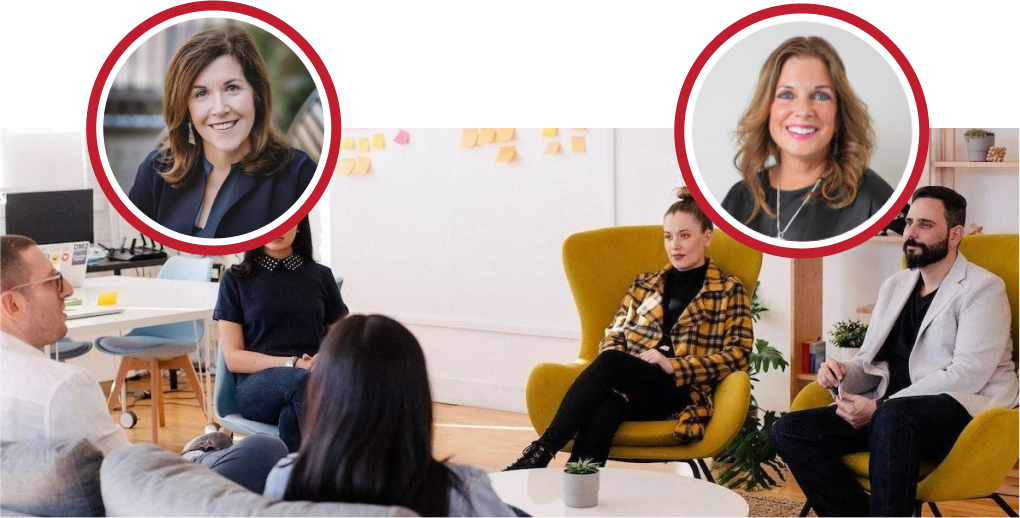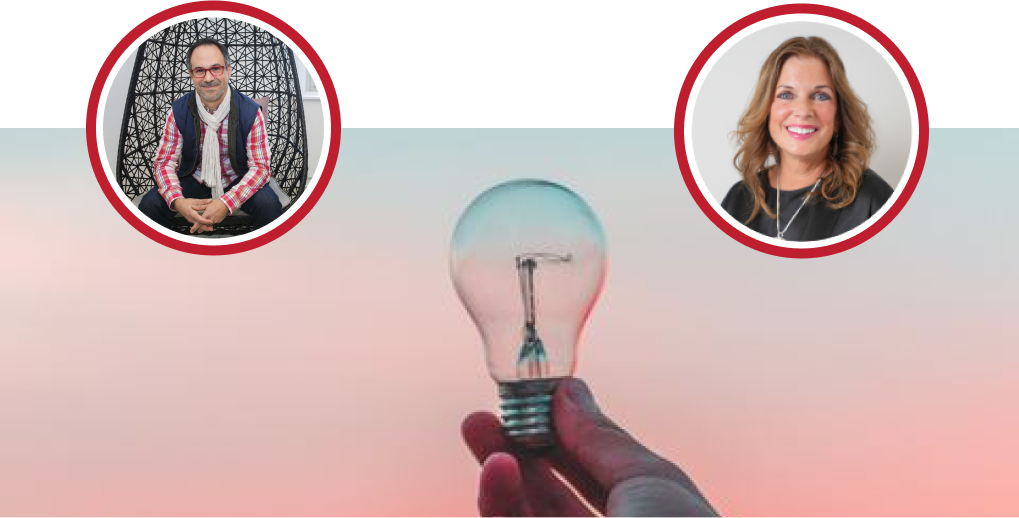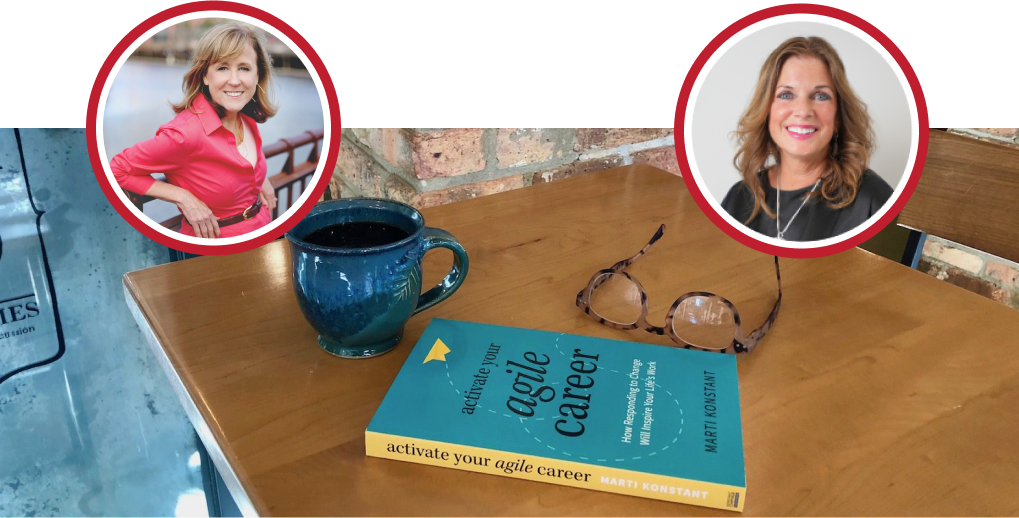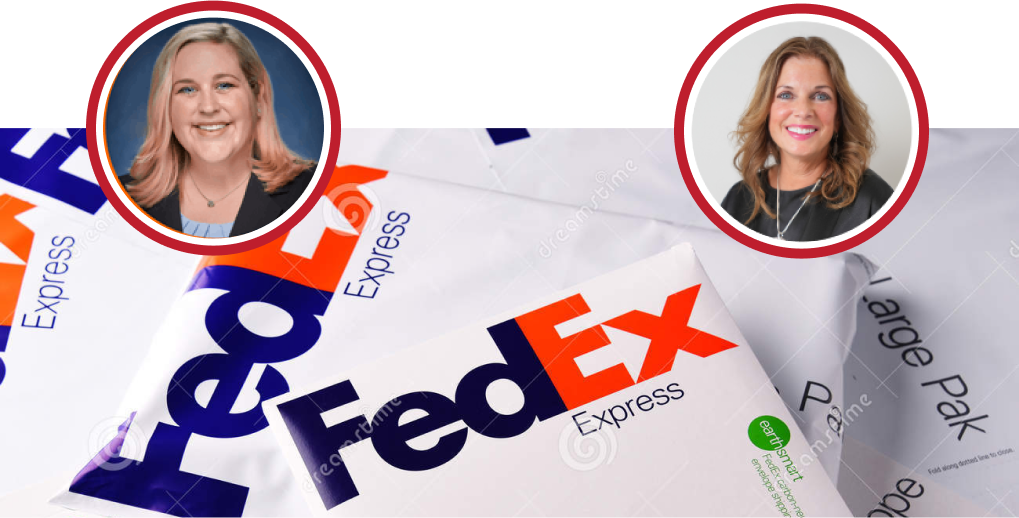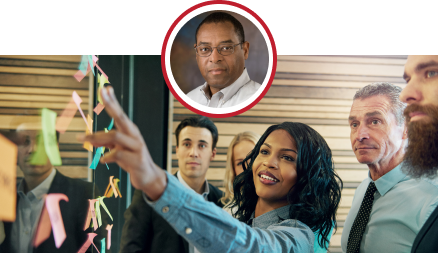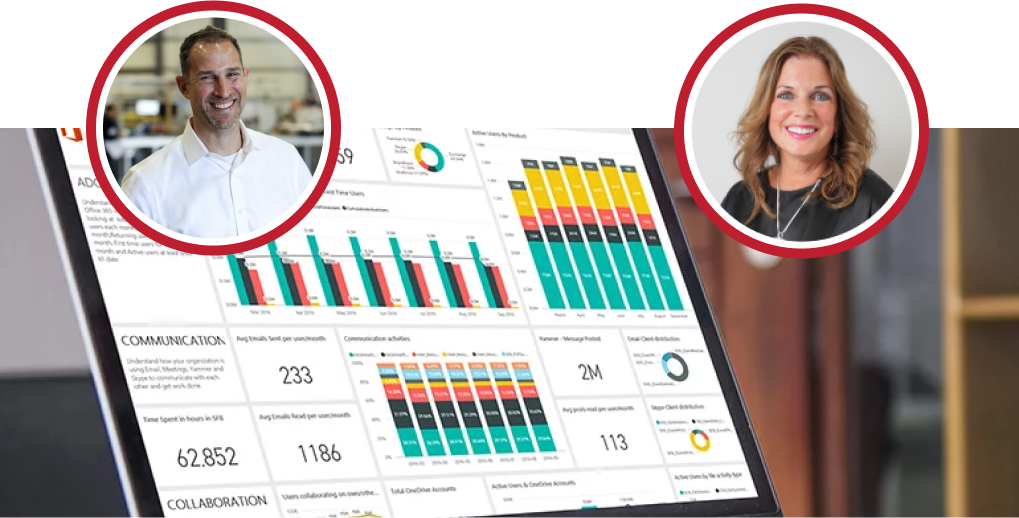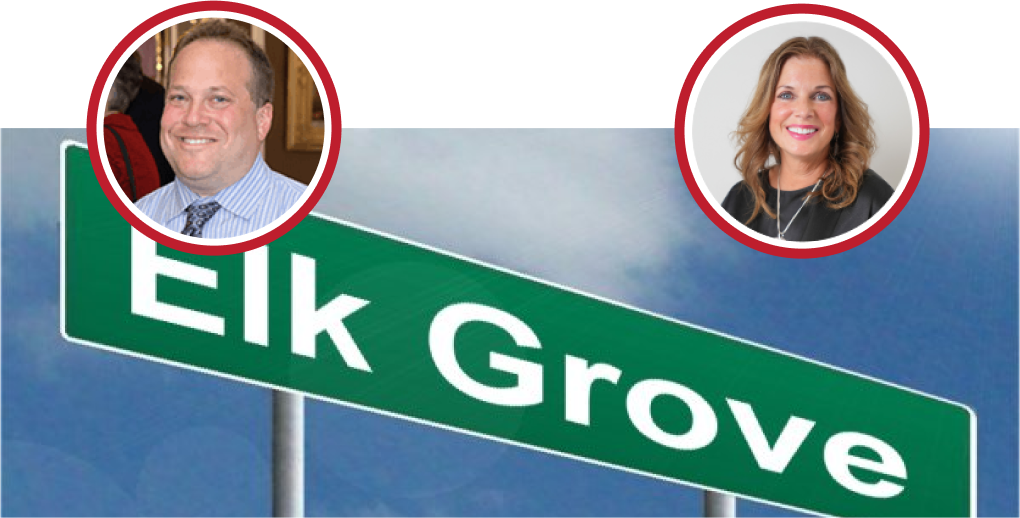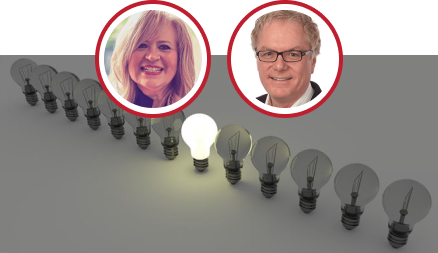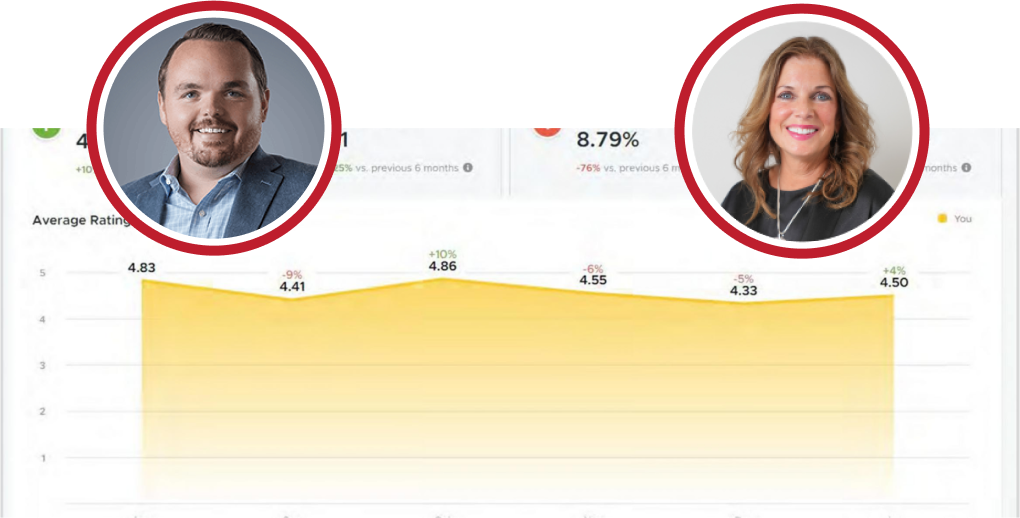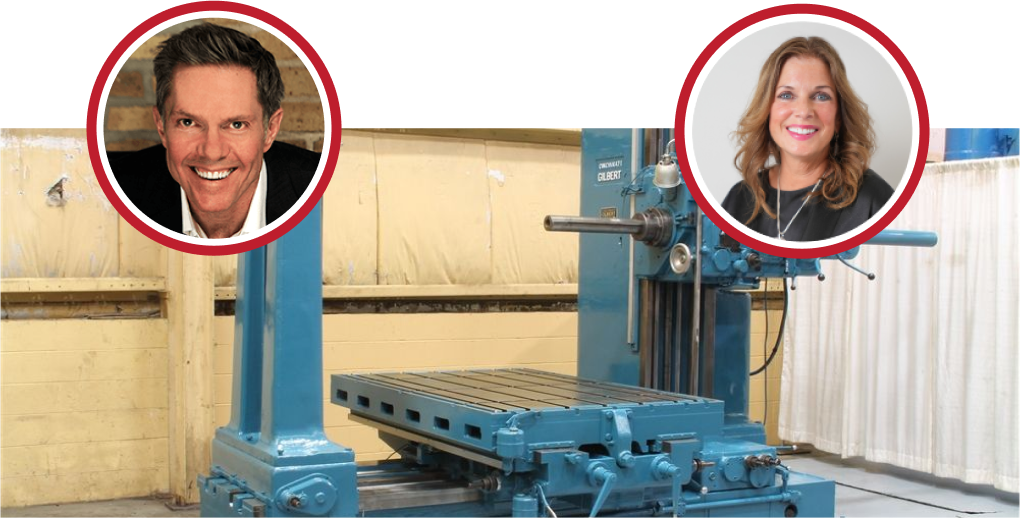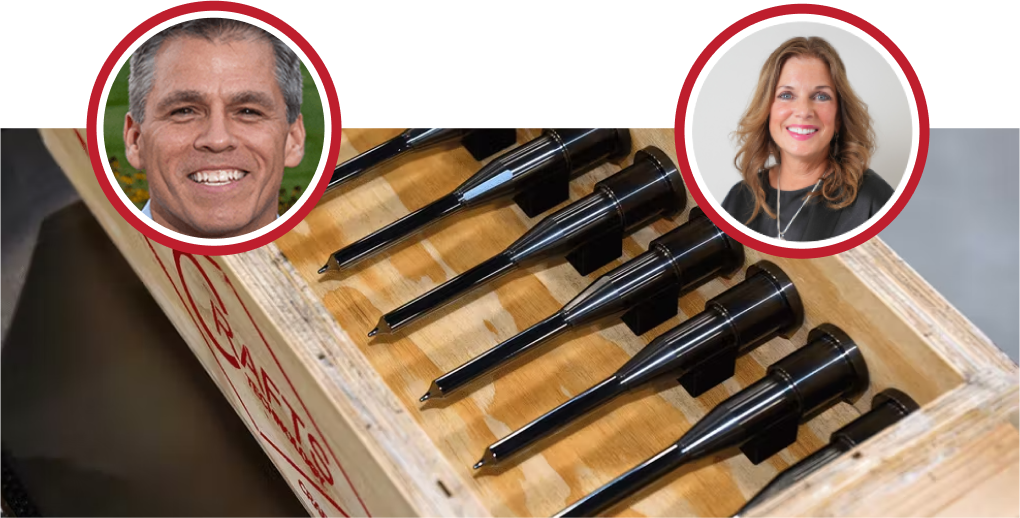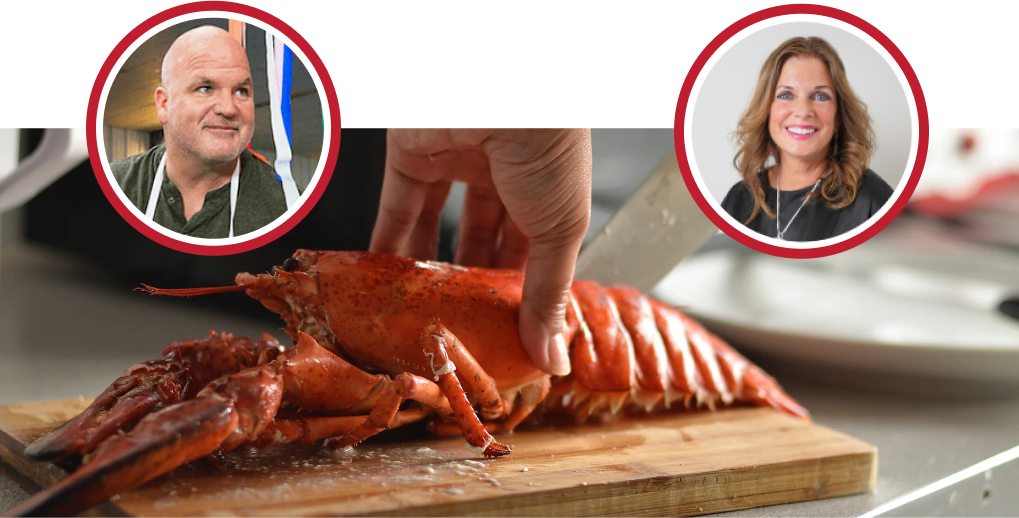Lisa: Well, we’ll go ahead and get started today. So, thank you again for those of you tuning in to our live “Business As Unusual” webinar series. My name is Lisa Behning, I’m one of the Account Managers at Red Caffeine, and I’ll be your moderator for today’s session. We are so excited to be talking today about inspiration, innovation, and definitely a dose of positivity; as we dive into today’s session, we are focused on speaking with badass leaders to learn what they’ve been doing during the Covid-19 pandemic and how they’re looking forward to the future, and you’re definitely going to get that high dose of energy and optimism from today’s speaker as a few housekeeping notes we do have everyone on mute today. So, if you’d like to ask a question, please use the chat function or the QA option; you can find those at the bottom of your screen. I’ll be looking for questions throughout today’s session, and we’ll make sure that our speaker answers them at the end of it; as a note, we did have our first five winners signing up for the webinar in an effort to support other small businesses especially restaurants who have been very hard hit during this economic climate we’ve gone ahead and had people sign up, and the winners so far have selected we have House of Taco in Jackson Michigan, and I also have a few others that said they’ll be using their voucher later on today. So, as a note, when you sign up early, you also have the chance to win; I know Kathy is supporting Shannon’s Deli in Lombard, Illinois, right across the street from our office, which is one of our personal favorites, so as we go ahead and get started with today’s session. I wanted to share and see just get a poll from the audience on where we’re at. So, I’m going to go ahead and share a question on my screen if you can answer that out of everything, so our speaker today is really going to focus on the three C’s of business- Culture, Capabilities, and Capacity. If you had a look at your business, what of those three C’s, do you feel your company needs to work on the most? So, we’re going ahead and giving everyone just a few moments to think about that question; the results are anonymous. So, we’re just getting a pulse check to give everyone a few more minutes here to respond or moments I should say a few more answers coming in capabilities go capabilities all right I’m going to go ahead, and we’ll end the poll here and go ahead and share results, so hopefully, you’re all seeing that as you can see by landslide nightingale definitely working on capabilities and I know our speaker today is going to cover all three of those areas as far as what car machine and tool has been doing and through that hopefully giving you some great takeaways on what you can do with your own business. So, with that, we’ll go ahead and get started here and like to introduce our speaker today or our main host, Kathy Steele, Principal and Owner of Red Caffeine and so good morning, or I guess good afternoon, Kathy.
Kathy: Good Afternoon, and so I’m so excited to be with my longtime friend Jim Carr. I hate to be so far from you, Jim, I’d rather be sitting right next to you, but we’re still doing some remote things. I’d love for you to just first start us off but just kind of telling us about you, a little bit about car machine and just introducing what you do?
Jim: Sure, hey, first and foremost, thanks for having me on today. It’s still kind of odd to think that people really care about what I have to say and that people are actually showing up to listen to what I have to say, but at the end of the day, I guess I have quite a few years of experience in manufacturing, and I’m willing to share that with people that want to listen. So, thank you, Kathy. Thank you, Lisa. So, yeah, my name is Jim Carr; I’m the President and Owner of Car Machine and tool in Elk Grove Village. We are a precision contract machine shop; we do work for aerospace, medical space and exploration, military and automated equipment; those industries kind of ebb and flow months and years, and we’re pivoting a little bit based on how the economy is, but really high-value high-quality prison precision machine components my dad founded this company in 1972 in the garage of our suburban Chicago house within six months we moved to Elk Grove to at least space and have moved four times since then still within the village of Elk Grove. I’m happy to say that the third generation has been working now in the company full-time for five years, doing an excellent job, and we’re working on that succession plan now still and then otherwise about six years ago, a friend of mine, Jason Zinger and I started a podcast Jason came to me and said hey, Jim do what a podcast is, and I said yeah he said do you listen to him I said no he said well I think that the opportunity is good opportunity remember that word is good right now to look at starting one, and it took me about 24 to 36 hours, and I got back with them, I said yeah, I think it’s a good idea I had an aha moment I said lets how much time and investment am I going to have to put into that podcast and when I thought about it really wasn’t a monetary number it was more just my personal time which has value, but I thought I could give that up. So, that’s me; that’s the truncated version of me and my manufacturing experience over the last 40 years so.
Kathy: Awesome! Well, let’s, let’s start off with talking a bit about the culture, and it is, it’s so interesting to run a business but to run a family business, a legacy business that you’ve taken over from your parents or your father tell us a little bit we’re gonna just queue up a short video of business culture, and then we’ll talk a little bit more about culture.
Jim: Sure, my dad founded the company in 1973 in the garage of our Chicago suburban house. He had a lot of drive and a lot of passion for what he did. We manufacture precision machine component parts for the Department of Defense Aerospace Aviation and space and exploration and automated equipment.
John: I used to sell machine tools which are these machines behind me, and I really wanted to sell a machine, a car. So, I came in one Saturday. I knew they had a great culture. I thought that they wanted to buy a machine for me, it’s an up-and-up company. I love this so much. So, I ended up working here at Carr after meeting Jim; we have a lot of millennials working here. We’re more aggressive. We’re kind of like a west coast shop but in the Midwest.
Linda: The moment I knew I was in the right place was probably early on because just the fact that Jim was available to communicate with me was just amazing to me, and that to me was first class, and it helped me because when I worked at a company, I really want to learn it from the ground up.
Serge: I’ve been here for 21 years. We teach people every day; we have the best team so far that I’ve seen in years.
John: If you speak up, people will listen, and a lot of times, we make decisions based on you.
Jim: We started doing weekly production meetings. Everyone gets together and says, let’s talk about our problems. What do we have? And through that intimacy and that weekly cultural elevation, it really helped us pull more culture into the company; then it moved into core values.
Linda: We narrowed it down to four things which became flex fly play and energized. My proudest moment was probably winning the culture award for core values because we really believe in them, and we really practice them.
Jim: I want to see us grow. I want to see us flourish; I want to see people that can learn and have personal growth in their careers; that really is one of the things that inspire me.
Kathy: So, Jim, since I’ve known you a while, culture has become really something you really focused hard on elevating, and can you talk a bit about why you think it can really make or break your business?
Jim: Well, I kind of selfishly, I kind of copied off the Red Caffeine culture. I was a little jealous of what you guys had going on there, and I saw how committed everyone was in your team, and I really, I could Kathy, when I came into Red Caffeine, I could feel that culture something that’s life and in and obvious when you meet anybody that’s part of a team that has a great culture. So, I saw that I liked it. I felt it, and I thought I was going to copy it. So, we did some research on it, we developed our core values and defined them; we had a list of 20, and then we really talked about culture, and what it meant to all the employees because really that and that video is really the essence of car machine it is the foundation of how we set forth to go forward because at the end of the day one person two people cannot run a company your company is run on all different types of people quite frankly right people in the right seats and it’s it ever since we started practicing this about two or three years ago it was very rewarding, and it’s really changed the direction of our business it’s made us more unified more succinct and concrete.
Kathy: Yeah, and I’m sure you’re seeing your culture help you kind of navigate some of the challenging dynamics we’ve all encountered this year.
Jim: Yeah, we hire fire and evaluate our employees based on culture; that’s how important it is. So, if I have a new hire, a prospect, I bring them in, I interview them once, then I bring them out, and I bring them in a second time, and then if I really feel that this person is a good fit I make every person in the company have a little personal interview with that person, and then we meet right after that and say what did you feel about what was the vibe how did you feel about that person because and I know and everyone that’s listening knows that when you meet somebody for the first time and in a matter of a few minutes, you can get a pulse of how that person’s core is and what they’re all about so, and I think that’s important because all we all have to work together, we need to be together 8, 10, 12 hours a day. So, it’s really important that everyone understands each other and feels a connection.
Kathy: Yeah, I would. I have to say one of our earlier guests even mentioned that it’s very tough for businesses to measure culture it’s a tough metric, but.
Jim: It is very tough.
Kathy: Yeah, he really felt like he was seeing culture metrics show up in how his people reacted to some of the conditions that we’ve all been faced with this year in a pretty rapid place. So, culture is one thing, but I think what you and I both know is that businesses need systems, and we’re both big fans of the entrepreneurial operating system EOS. So, can you speak to that experience at a high level and then like how it’s impacting what you’re doing strategically this year?
Jim: Sure, happy to. So, funny story, when we when Jason and I started the podcast, Jason was all culture and blah blah and all that, and we kept talking about in the show we kept interviewing people that had all these great cultural fits and this resounding book called “Traction” came up quite often in by gene Traction by Gino Wickman, and it’s EOS entrepreneurial operating system it’s a systematized way to run your business, and I would say for a year or two, we kept hearing this resounding book, and I thought what have I got to lose. So, I had I defined our leadership team and bought a copy of the book for everybody, and I said okay, we’re going to read one chapter every week and just sit in our weekly l-10s, which is your leadership team, and we’re going to talk about it, and we’re going to go through every chapter and just understand what it’s all about it was a slow process I don’t know how many chapters are in traction, but within that, within a couple of months we were up and running we used an integrator kind of pro bono a little bit he kind of helped us because we’re a smaller company and ever since we’ve been practicing EOS defining our rocks defining our to-do’s going over issues high-level problems that a company has, and you have to really trust your leadership team to give you solid honest and authentic answers, and we solved so many issues I would say first quarter 2019 and still to this day based on the EOS system.
Kathy: Yeah, I could not agree more. I think it’s been I we have only been using it since last November, December, and it’s been it’s just been phenomenal progressing us around just really problem-solving and being more effective as leaders in our organization. So, I also highly recommend it, so let’s talk a bit about what’s going on with you guys right now you’ve been.
Jim: Sure!
Kathy: And, we’ve been in this kind of crazy, tumultuous year. Would you tell us a little bit about what’s going positively for you, or I know you’re making some bold moves. So, tell us a little bit about it?
Jim: We are; we’re doing, we are. So, through the EOS system, we define our leadership team defines rocks a rock as a quarterly goal that you want to hit. I mean, you have one-year goals, you have three-year goals, you have 10-year goals, but most importantly, we have quarterly goals that we want to hit, and we knew that we needed to pivot into different industries we knew that our brand was aligned with high-value high-end OEMs. We knew that there was an alignment there. We just needed to penetrate those industries. So, we really made a concerted effort to go for it; we were strategic in how we approached those OEMs and decided that we probably needed to move. I’ve been in this building for many decades. I don’t want to tell you how many years, but it was my rock to make the decision to move where, when, how much how big, and it was up to me. I’m the leader of the company, I’m the owner, so I thought that was an appropriate rock for me to be tasked with so; it didn’t make my quarter my first quarter 2020 rock because I kind of just blew through it, but as we set our rocks for the next quarter and then this pandemic happened I really started to think about this is an opportunity not because the way real estate was going or anything I just thought this is the craziest thing I’ve ever been through in my life, and I’ve been around for quite a few years, and it’s not I mean, and I thought what it’s now is the time now is a time to pivot to make a shift to take a little bit of risk because at the end of the day as well as I do Kathy that growing a business there’s a huge risk responsibility. So, I met with a realtor, I said let’s get real about this, and we started looking, and we just we do right now have a contract for a new space here quite frankly in Elk Grove Village, and it’s about nearly three times as the size that we have right now I think it’s 2.72 percent more than what we have, but I’ve never been more excited in my life because I really believe that new building is going to be aligned with my personal brand my business brand, a brand that a high-value OEM would be seeking out.
Kathy: Yeah, no. I couldn’t be more excited for you. I’m actually glad you, Elk Grove, of course, but I definitely have seen so much data around making offensive investments in a climate right now, and we always have to be somewhat conservative, and I think systems like EOS and financial acumen help you be both conservative with decisions, but also being advantageous when there isn’t a growth opportunity and do you see that opportunity for growth is more like organic market share growth. Do you think this might even allow you to enter some new marketplaces?
Jim: Absolutely, enter new marketplaces; it’s already happening right now. I think that everyone’s this has been such a disrupter, Kathy, that I think that people are just no one’s doing things the way they used to right first and foremost what percent of our working people what percent of our working population is working from home nowadays think about what that thing about just that one thing how disruptive that has been to our economy to the way we work. So, just that one thing. So, I think that it’s like taking a box like a snow globe. So, here’s the world that we live in, the snow globe that we were in before there was no activity, and I feel like there was just a 7.2 earthquake on that snow globe, and everything’s just mixed up. So, boom, I think my personal opinion is now is the time to take a little risk because it’s an opportunity for change; there’s so much change happening your change may not necessarily be that difficult right now.
Kathy: Yeah, no.
Jim: Sense.
Kathy: I mean, I agree. I think that we can; I don’t I think in any year that you’re approaching thinking about where your company is going to grow, you’re going to have to take a little bit of calculated risk, and by looking at some of the markets in indicators and placing bets in smart ways. I also believe this is a time to be a little opportunistic.
Jim: Yeah!
Kathy: So.
Jim: I was going to say something else. I also think that for my industry of manufacturing, this is another great opportunity that we’re approaching. I’ve talked to a couple of business leaders already in my leadership team about this, but I don’t necessarily think it’s going to be profound in 2020, but in 2021 and 2022, and I’m not an economist. I don’t have a crystal ball, but we truly believe that 2021- 2022 is going to be huge for our industry for reshoring just because of what we’ve been through about the supply chain issues that a lot of the domestic people are hitting we really believe there’s going to be a huge surge in domestic production here in the United States in the future, i.e., that’s one of the reasons why we thought we would invest in capacity and capabilities in this move no setting ourselves we’re getting ready for another manufacturing renaissance.
Kathy: I agree, and what’s so great about that, and the concept of that, is that you will have an impact on so many ancillary marketplaces because as we’re doing more here in the US. We will have a ripple effect on other businesses.
Jim: It has to; it absolutely has to.
Kathy: And I, and it’s about time. We shouldn’t be so paralyzed by not being able to produce things because we are not getting access to the components and parts in our communities or in a shorter lead time. So, we can build things faster so.
Jim: Exactly!
Kathy: About that is very exciting, but in thinking about sales, you did sort of make a bold statement about this newer approach to sales, but there are also some old-school things that are coming back; you even mentioned cold calling. So, talk a little bit about it?
Jim: Yeah, remember that remember what that was, remember what a landline was. Are they even relevant anymore? I don’t know; all I know is, again, there’s been such a disruption in our business that people are doing things entirely different than what we used to do, and if that means we’ve gone from emailing communication, what do we’re going to pick up the phone, and we’re going to call and guess what the people are going to answer. So, I talked to my sales manager, John, and he said what he said it’s really weird. He said people are starting to answer their phones again, and maybe because people are at home, maybe they feel more comfortable answering the phone, or maybe they’re not so busy, maybe they just want to talk to somebody, maybe people just want to talk about the pandemic maybe people just want to share my grandma got it, or maybe people I think people want to talk because we’re all isolated. So, I think people are yearning for connection. So, yeah, I think cold calling is back. I don’t know if it’s gonna be around for the next two years, but I think for right now, I think there’s an opportunity for cold calling.
Kathy: Yeah, and I think it’s just that your approach, if you’re trying to directly sell somebody on a cold call, that’s not the approach as long as you are coming at it from a place of care and concern and being a resource that could be helpful, I absolutely agree. We see a lot of responses to picking up the phone and having a conversation, and so on that note is this is somebody had sent us a question about marketing, and you do really champion the idea of marketing. Can you talk about why that’s such an important fact factor in your business strategy?
Jim: Yeah, so I never really knew what marketing was until 10 to 15 years ago when I was introduced to you and Julian; I just, I kind of gravitated to people creatives marketing people, Patricia Miller Julie, your entire staff and I really can identify with creatives, and I guess I have this need to feel like marketing has been something that is out there it’s a relevant thing, and you need to stay top of mind all the time. So, I really witnessed the importance of it and how important it is to keep it healthy it’s you just can’t start a website and do one thing for two months; it’s something that takes time to do all the time you can’t, you can’t stop and go with it. I think it’s important to be out there. I think it’s important to utilize social media it’s social media is well, especially nowadays; it’s been getting a bad rap, but I think a first and foremost, there’s no cost to social media except your time and investment in creating posts it’s a great platform to highlight your wares if you’re a manufacturer you can show the parts that you make if you’re in clothing you control textiles if you’re a dentist you can show teeth or whatever the case is I think that social media is a really powerful way to market yourself to get your name out there and your brand out there and create a brand around your business, yeah I fully endorse any kind of marketing process that’s out there the only thing I will tell people is marketing is something that has to stay fluid you have to make an investment into it, and it has to stay on it can’t stop and go.
Kathy: Yeah, I mean, I believe in it, and I also feel like it has to be strategic and a bit focused as well. So, that you’re getting actual outcomes, but when it’s teamed up with sales, and it really becomes a tool with your sales process, it’s really creating that kind of the same thing that EOS creates. It creates your revenue generation system, which is a combination of marketing tools and tools.
Jim: You really need to know. I think first and foremost if you’re entering into a marketing process, you really need to know who your target market is? And once you determine that, and you’ve really filtered it through a few times, then you can start your marketing program and go from there.
Kathy: Yeah, I mean, you’ve done such a great job with your positioning, and really I think that’s paid off to kind of seeing thanks which, who you are in the marketplace it’s very clear and differentiated so marketing as an opportunity I cannot negate talking a little bit more in detail about making chips. I have to say yeah, I was there in the early days, and yeah, I was not at full disclosure; I was not a believer, I was a little bit like.
Jim: Kathy, come on, are you kidding me?
Kathy: Like manufacturers listening to podcasts, I don’t know; this sounds like.
Jim: Who knew? Yeah, I know. Well, honestly, it surprised me too. So, I’m not gonna lie either, but it was; I was willing to take a chance and take a little bit of a risk.
Kathy: Right.
Jim: So, you did; you didn’t think it was gonna fly. So, yeah, I didn’t either I can be happy to talk about that; yeah, I can remember early on in the early days. We, Jason and I, were crafting the structure on how to run this business and what to do. I didn’t know what the hell was going on, and we would show up to do our first recording, and we’d be going through all the electronics and the microphones, and we’d say, oh my god, we don’t even have a cord. So, we’d have to reschedule the next record, and with both of us running independent manufacturing companies, time was difficult, and then and then we finally figured out how to record our voices onto a disc, and then where are we going to record, I remember being at Jason’s in his furnace room in Melrose Park, Illinois. It is like right next to O’Hare I can remember waiting for the planes after they’d land because there were. So much background noise that the jet was probably about 100 feet off the top of this building. So, I mean, we’ve come a long way, and yeah, we’re at a half a million downloads right now. We get it, on average, about 10 000 downloads a month. So, it’s incredible.
Kathy: I mean, you’re super legit; it’s revenue, it’s a business you generate revenue.
Jim: It is a business.
Kathy: Yeah, so I mean.
Jim: We do.
Kathy: I am glad to be a little bit wrong, and don’t tell my husband. I’m sure he never hears me say that, so.
Jim: No, it’s okay to be, it’s okay, you learn from mistakes or errors, and I mean, I just think it goes back to Kathy, to just taking a chance and taking a little bit of a risk and kind of vetting it out in your head does everything make sense to is everything aligned is now the right time, and you just try to do it, and then you got to work at it right you just can’t. It’s just not going to happen organically; what do you get to work, right.
Kathy: Oh!
Jim: So.
Kathy: Absolutely, and you guys are a lot of fun, and I think what you’ve done is you’ve built a forum to talk about some of the everyday problems. I mean, I was just looking at all the different topics you cover. You keep something that you talk about very laser-focused, totally only a manufacturing audience would care about, and then you talk about leadership and economic conditions, and there’s just so you cover all the challenges that we face as business runners. So, it’s relevant even outside the manufacturing space, and I know I’m a big fan of it as well.
Jim: Yeah, thanks. So, the mission of the podcast is to equip and inspire a manufacturing leader. So, our target audience, remember I mentioned target audience is a manufacturing leader. So, a C-suite leader, CEO, CFO, somebody at that level. I mean, of course, we have machinists that listen to the show because there’s relevant information for them too, but our target is laser-targeted at that level person in a manufacturing company, and we believe that we’re hitting that target all the time. So, we have to craft our conversation to that target audience, and I guess it’s been working; what we do know is a bartender in San Francisco probably does not listen to making chips because there’s nothing that we’re talking about is relevant to them, so we know that we know the audience that we’re touching is somehow or for sure connected to manufacturing.
Kathy: Yeah, even people that are ancillary, we’re not in manufacturing, but we have about a 70 concentration of our portfolios manufacturing. So, we care about what our clients care about too, so it’s great.
Jim: Right!
Kathy: For us as well. So, I want to ask something a little bit personal; I love to hear about what you’ve learned about yourself and me, and you don’t have to just speak to me this 20 20 years, but we’re both a little bit older, and I feel like I’m constantly learning. So much so, can you share what you’ve learned either recently or in the last year about yourself? That’s kind of been surprising.
Jim: Yeah, that’s a good question. That’s a really good question. I think authenticity is not being afraid of whom you are and just not trying to filter for an audience. I also believe that I’ve learned that taking a little bit of a risk is okay because we all we Jason and I did a podcast about this once about the only way you’re going to grow is if you push yourself into an uncomfortable feeling when you’re when you decide to do something, and you really are hesitant to do it, and you feel like you’re a little uncomfortable about doing that it’s not feeling good it’s okay to push yourself out of your comfort zone because what you do is once you do that you push yourself out of your comfort zone your box gets bigger and then if you push yourself out of your comfort zone even more the box is going to get bigger and eventually all of those things that you were afraid to do or worried about they’re not so big anymore. So, I think I really believe that pushing yourself out of your comfort zone, not aggressively I’m not going to jump off a bridge, but just like maybe five years ago, I’d be really hesitant to do this live webinar with you because I didn’t feel as though I’d feel comfortable doing it I mean now it’s no problem at all, but I really would tell people to just start practicing that, and if you’re pushing yourself out of your comfort zone because you’re going to feel that little uneasiness in you.
Kathy: Yeah, well, I mean, I’ve seen you take some major steps in, probably the last ten years that I’ve known you being the chairman of the TMA and started launching the podcast. I mean, you’ve really made some big steps and taken on some big tasks. So, I think you’re dead on it really does.
Jim: Well, it all hasn’t been. I mean, there’s been some errors along the way, but you just pick yourself to learn from those, and then you move on. I think that failure is a good thing in some instances, too, because it’s just like the old adage that when you’re a kid, and you burn yourself at the mansion, that’ll never happen again. So, I think failure is healthy. I really, I genuinely believe failure is healthy. So, take that risk, and if you win, great; if you fail greatly, you learned something from that. It’s just you don’t want to take your whole nest egg and put it on the stock market because you feel lucky. I mean, you’ve got to be strategic in what you’re going to do, and it has to make sense and talk to your peers. If you’re really thinking about making a big investment, let’s bounce an idea off one of your friends in the industry.
Kathy: Absolutely well. I think we’re going to start to open it up to questions, but I have to ask you; of course, you and I are both travel buffs; we love our wine. What do I do? What are you drinking these days? What are your favas?
Jim: Well, my wife only drinks chardonnay. Well, I’ve gotten her to convert a little bit over to a pinot noir, but so we typically we drink a lot well a lot of chardonnay, but we’ve one that’s really a good value that it could be a that’s really an excellent chardonnay that can be drinking during the week, we kind of have our essential weekday wine. So, we’ve been drinking Ferrari Carano, a great vineyard out of Sonoma, and they have an excellent chardonnay. It’s probably one of the best value for the dollar out there right now, and then, of course, on the weekends, if the budget allows, we would look; we love cake bread chardonnay is awesome, and I knew you were going to ask me this, and there’s a pinot noir that I’ve been drinking it’s really a nice pinot noir is it believe or something like that it’s a little pricey, but it’s a pinot noir that tastes like a cabernet. So, Pinot Noirs, which are typically a little on the lighter side, is a pinot that tastes like a cabernet. So, I highly recommend it, and I apologize. I don’t have the name of it; if I saw the label, I’d know, but I don’t know it off the top of my head.
Kathy: We’ll send it out in the show notes, but, okay yeah, I have to say that, of course, drink a little whiter wine in the summer. I’m a big Red fan, but I’m on this like Dry Farms Wine; on mail order, it’s all organic, it’s really low in sugar. They curate wines that are made with dry production. So, they’re not. It’s like just a really neat wine group that is from all over the world, and I’ve had some from Spain and Italy, and Austria. So, you guys should check it out because I know, I know it’s the white.
Jim: Yeah, I’m not. I’m not as global as I know you love wines from France. I typically stick to Sonoma Napa, Northern California, oh, Seattle, there are some great vineyards, château St. Michelle, out of Seattle is awesome too.
Kathy: I absolutely love it.
Jim: So.
Kathy: So, Lisa, how are we doing on questions? Do we get some questions?
Lisa: We do have a few coming in. So, so I’ve got one, Jim. I’m going to dive straight to the heart of manufacturing on the first one.
Jim: Go ahead. I think I can answer that, yeah.
Lisa: I think you’re good there, so two-part question. So, we’ll start with the first one; what role do you see additive manufacturing playing in the next ten years?
Jim: Good question; again, I think it’s Evo. I think that technology is evolving; of course, we’re subtractive. So, we take a raw piece of metal and subtract the material added of course is just that I don’t know that additive yet, and I could be wrong because we don’t do additive here; I believe that it may not necessarily be able to hold the tolerances that we’re doing by subtractive machining. So, maybe a plus or minus 1 000 tolerance dimensions on an additive might be difficult to achieve, but I certainly believe there is a place for additive in the manufacturing mix and whether or not you’re using an additive to create an apart and then use it just, and we can subtract it to bring the tolerance in, but I definitely believe it’s moving in that direction, and that’s about the best I can tie on the additive.
Lisa: And then, the second part of that question, the same individual wondering, when you look at non-prototype work, where do you see 3D printers playing?
Jim: Non-prototype work for 3D printers, yes. So, 3D printing is an additive process, right so? It’s basically the same thing. So, I would definitely think that for non-production work, additive or 3D printing can be really relevant, especially as the technology of those machines evolves, and they can apply material faster and create that build-up faster and closer tolerance because I know what it takes for us to do a one-off a two-off part. We had to buy that raw material, we had to program it, we had to select the correct tooling, we had to make the setup, we had to cut the metal, and that takes an enormous amount of upfront time, actually. We could, I always say to people sometimes, especially our customers that don’t understand, it could take us 10 hours of non-cutting to get ready to cut the work and in only 15 minutes to actually cut the piece. So, additive definitely can help in mitigating all that upfront time.
Lisa: So definitely, a spot for everyone to play and, of course, cars specializing in that, which leads me to my next question. I’m going to bring it up a little bit here, so Jim, before I ask the question, I actually wanted to preface well. You and I were speaking before the webinar. You said kind of that imprinting your DNA everywhere from Illinois to space. So, a really neat opportunity that car had I didn’t know if you could share at a high level, and then I’m going to lead into our next question with that.
Jim: Yeah, so the foundation of car machine and tool was my dad had a relationship with commercial printing. So, remember what newspapers were? Remember getting the Sunday paper on Sunday that big honking thing and everyone would go to the advertisements right away, and well we don’t do that anymore, right we don’t read the paper, and the general public of a very small percentage doesn’t read the paper anymore. So, we were highly involved in the manufacture of commercial printing parts either for new printing presses and or replacement parts the wear items for those commercial printing presses, and back in the 70s & 80s and maybe even into the 90s, we had a really large portion of that work however when we saw that newspapers weren’t relevant anymore we started to pivot, and we’ve done a really good job in strategic pivoting, and I’m happy to say that I mean we’re into medical we’re actually doing some coveted parts I’m waiting for a package to come in right now that we’re going to be doing some parts for coveted machinery for vaccine and aerospace and space and exploration we just recently shipped apart to one of our customers that is going on a SpaceX rocket to the space station in the fall. So, I coop very coolly, so our DNA will be flying up there somewhere.
Kathy: I love those where our parts go stories because I think that’s the missing gap, and how exciting manufacturing really is that the understanding of where some of these pieces and parts go, they’re not really seeing the whole picture of how cool this work really is well that’s.
Jim: You tell people you’re in manufacturing, and people you can tell you’re boring them because their eyes start to glaze over, and they don’t know what we do, but if I can, if I can relate a story to it like Covid and International Space Station and I don’t even have to get specific I just have to say where they’re going or what they’re doing or how they’re integrated then people understand then they understand how important it is right wouldn’t you want to work with the machine shop that’s doing parts for an airplane when you’re 30 000 feet wouldn’t you really hope that those parts on that plane were manufactured correct and to print into tolerance.
Kathy: Yes!
Jim: Yes, you would.
Kathy: I want to get back on a plane.
Jim: Yes, when we get back on a plane, fingers crossed it’ll be sooner than later.
Kathy: Yes.
Lisa: So actually, a great question came in while you were saying that, Jim, how do we get the next generation of youth excited about manufacturing?
Jim: That’s a very good question; we talk about it all the time on making ships. I think, that I think we have to introduce people to the industry at a young age some people are saying elementary school I personally think it’s a little too young but I think that the image of manufacturing, well, it has changed, but people don’t know it, yet it’s not your grandfather’s machine shut up anymore this industry has so much to offer people for a career a well-paying long-term life-long career that will take care of you and your family for a lifetime, but I think that if we introduce younger people to what we’re doing like manufacturing day in October is a great way to invite kids young people into our facilities show them what we’re doing show them that it’s not an oily greasy environment that they’re gonna be where it’s really highly technological and clean, and I mean I can quite frankly I can’t believe the way we’re machining parts nowadays I couldn’t do it, we’re working on fifth axis parts right now nearly 95 of the parts were generating tool paths are on Master CAM, our CAD system it’s going. We just bought a brand-new fifth-axis machine, and we’ve got work already. The machine is only four weeks old. We’re jam-packed on that machine already. So, I invest in your infrastructure, invest in technology. I don’t think you’ll ever go wrong with that, so back to your question, we need to introduce kids to the industry. They need to see it touch it, and feel it. Those types of people that it would be interested are typically people that like to work with their hands; the guys from the automotive classes are right for this type of industry people that like to build things like to touch things like the result of seeing something come to fruition when they’re done cutting it.
Kathy: Yeah, and maybe just more stories like yours about time and the impact it’s going to have on the next SpaceX mission so.
Jim: Yeah, cool, oh, I think Kathy, if you had the opportunity would you take a rocket into outer space.
Kathy: Oh!
Jim: Now I’m asking you the question.
Kathy: No, I said the other day I played tennis with a pilot, and he was like I really would love to fly a rocket, and I’m like I don’t know if you’d want me flying it, but I’d be like in your co-pilot seat all right let’s go let’s.
Jim: Would you really do it?
Kathy: Oh!
Jim: If it was affordable in our lifetime, would you do it?
Kathy: Oh, for sure, I love it. Yeah, I.
Jim: I don’t know yet, but I rest assured the parts that we’re making for you are the best; they’re a participant in specifications.
Kathy: Now that I know that it’s a definite yes.
Lisa: I’ll leave the flying up to you guys. I’m still trying.
Jim: Yes, thank you.
Lisa: For your worldly fears, Jim talking a little bit more since you’re talking about EOS earlier on, knowing that going through the EOS process, there are always some modifications you make. So, how did you really customize or tailor EOS to fit the car machine?
Jim: Good question. Well, our business isn’t, it’s, we’re not a hundred- or 200-person business. So, we had to, and really EOS is typically for businesses around 25 people or larger. So, we had we kind of had to modify a little bit. I think we only went by the book. We referenced the book often when we had issues or when we were looking at processes on how to do something. Still, at every our annual meeting, I still bring out the book, and we read everything on how to conduct an annual meeting because we’re not using a facilitator to do it or doing it ourselves. So, I think that you have to just do it in baby steps and modify it based on how the size of your company; yeah, does that answer your question or the person’s question? Kathy, go ahead. I was going to ask whether everybody has rocks on your team. Okay, the leadership team, yes, okay, and if sometimes it’s tried it’s hard to get those balanced or sometimes one of the leadership teams rock is a little bit bigger more profound than somebody else’s but maybe the next quarter somebody else’s is like I had my rock was to buy a building so but who else I couldn’t give that to my sales manager to go buy a building right it had to be up to me so but yet his responsibility is to generate sales and now that we’re buying a new building, and we’re increasing our capacity he’s got he’s going to have a rock to go out there and get sales so, yeah.
Lisa: No, I think that’s perfect. Yeah, just how do you change things so.
Jim: You got to make it your own. You have to make it your own; you can’t be really rigid about it; I think the thing is you just gotta you got to just do it a do it and be consistent. You can’t just do it one week and then slop, not do it for a couple of weeks after; you gotta do it religiously.
Lisa: Yeah, I think that almost should be your fourth see if we do culture capabilities capacity and consistency is really important consistency in all effort’s consistency and marketing consistency in EOS, which I think is a great way to end today’s session. So, thank you, Jim, for all of your insights and for sharing all of your energy. I know Kathy, and I enjoy that as we look ahead for those of you; if you have any other questions for Jim that maybe pop up later on today or into next week, we do have his contact information up there, so you can email him or also connect with him on LinkedIn make sure to tune in to making chips obviously your number one manufacturing podcast so much to learn from Jim and the rest of the team. So, thank you again, Jim, for joining us today; you’re very welcome my pleasure being with you; thank you, yeah, as we look to our next webinar, which will be June 18th. We have Chris Campbell, CEO of the review tracker. So, as we think about reviews in this world today, I know that if I’m going to a new restaurant, I’m going online. If I’m on Amazon, I am looking to see what other people say. So, although those might be B2C instances, it is more important than ever for B2-B companies to make sure that you are also considering how reviews are affecting your business. Chris has actually shared some pretty amazing statistics with us on how effective a review can be or how much it’s going to drive away your business; it could go even up to 94 of people avoiding you because they saw a negative review, so in two weeks to hear more on how you can take reviews and make them basically a mission-critical essential piece of your business and how to start evolving that into your strategies you can sign up on the Red Caffeine website. We’ll also be sending out an email after this, so stay tuned for more information, but we’re very excited to have Chris joining us here in the next few weeks. So, with that, thank you for attending today. This session was recorded, so we will email it out to all of you who did sign up and will also be available on the Red Caffeine website. This is the first time hearing about Red Caffeine, and if you’d like more information feel free to connect with us online through our phone number or through our website, we look forward to speaking with you. So, with those, thanks so much, and enjoy the rest of your day.
Kathy: Thanks, Jim.
Jim: Bye, everybody. Bye, thank you soon. Bye now. Bye, Lisa.
